Christian cross the value of the symbol. About the cross, his kinds and proportions
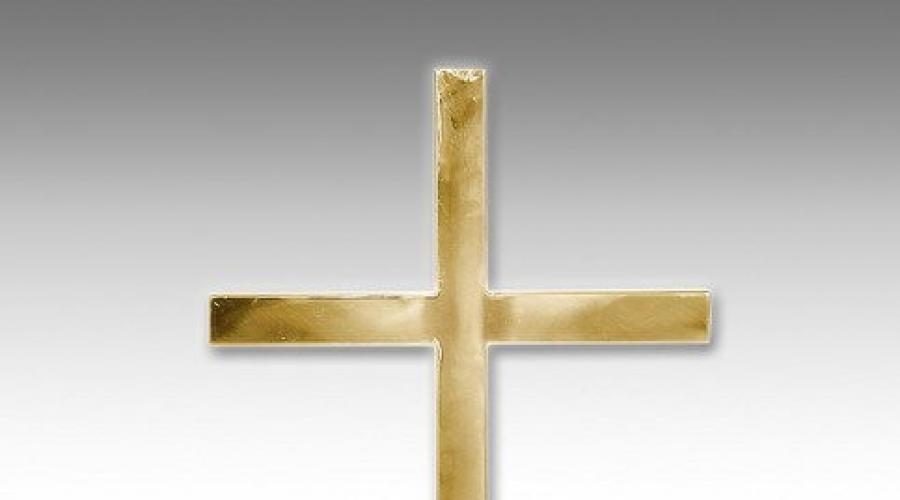
Forms and proportions orthodox crosses
Cross - chief symbol Christianity and endless faith. His image of his image, Christians worship not an instrument of execution, but a non-restless spiritual arms and a symbol of eternal life, which was granted to people with the redemption from sin. The overall crosses erected over the Orthodox temples have many forms carrying a certain symbolic meaningHowever, six-pointed and eight-pointed are the most common.
Six-pointed crosses
Widespread since the times Ancient Russia, the six-pointed cross with the oblique foot - Merilo righteous - centuries wounded the domes of temples. The inclined foot has two values. The first is the scheduling scary of the "terrible" court, whose upper side symbolizes the liberation with repentance, and the bottom is an unrecognized sin. According to the second version, the upper end, like an arrow of the compass, indicates a person to the beginning of the spiritual revival and direction of the path from the darkness to the light area.
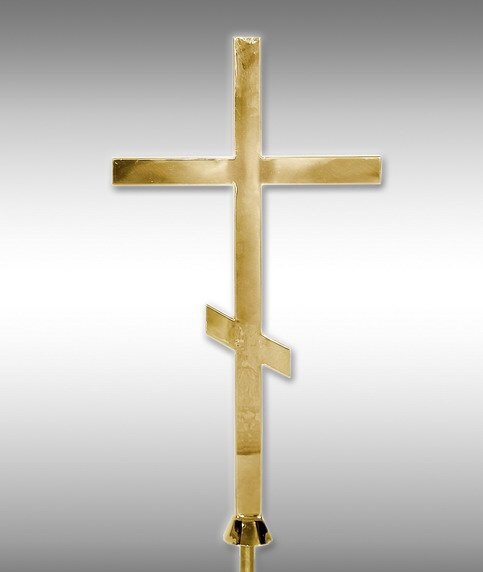
Eight-pointed crosses
Eight-pointed cross erected above the temple, at the base of which can often see the crescent, most accurately recreates historically reliable the shape of the crosswhere Jesus Christ was crucified. From a long time, he considered powerful protection against invisible and visible evil, it, except for the lower oblique and horizontal crossbar, has another, symbolizing a sign with an Inri inscription (abbreviation latin phrase, meaning "Jesus Nazarenin, Tsar Jewish" and ascending to the New Testament).

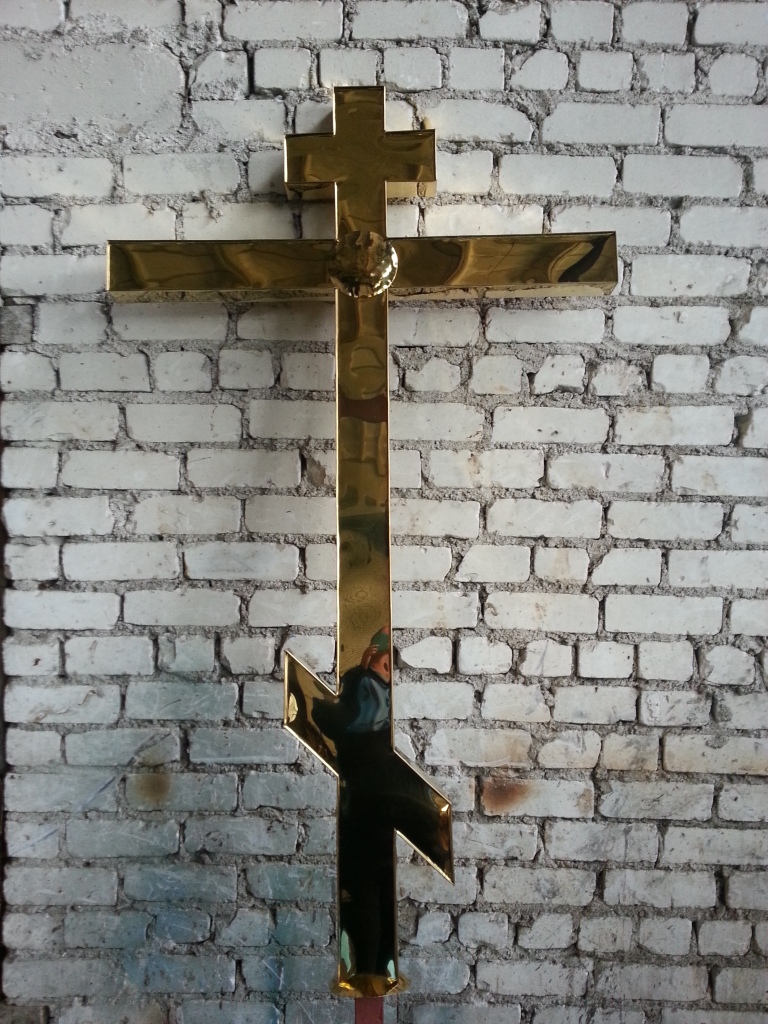
Other forms
To the favorite form of ancient Russian masters include a shader who is a symbol Life-class TrinityAt the same time, the completion of the ends of the cross can be both round and triangular (pointed). The star Morning was not less common, creating a blacksmiths decorated with a radius radiance outgoing from the center of the Cross. By the way, it is with the help of these wavy or straight lines of the master who decided the image of the image of the natural light of life.
In addition to lines of radiance, on Orthodox crosses, you can see a vine with bunches of berries, the pigeon depicting the Holy Spirit, flowers and ready to dismiss shoots - the apotheosis of the life-giving force.
Proportions and methods of manufacturing
Regardless of the shape, all crosses, crowded dome of Orthodox churches, are manufactured in accordance with canonical (gold) proportions, which differ exclusively high aestheticism and determine impeccable match between integer and parts. The proportions of the "golden section", known with deep antiquity, have a beneficial effect on a person, attending all harmonious phenomena of life and, therefore, only according to them a symbol of God and Faith can be built. The proportions of the body are also subject to the law of the "Golden section", and, by falling herself with the procession, a person conveys them and the imposed cross.
All sizes of Orthodox eight-pointed cross Defined by members of a number of "golden section". The generally accepted designation of this proportion is f (in honor of the fidia, an ancient Greek sculptor, the first applied Divine cross section When creating their works), equal to 1.618. Based on this, if you take the height of the cross for 1.618, then:
- The length of the average crossbar f \u003d 1;
- The distance from the top of the cross to the middle crossbar and the length of the upper crossbar F-2 \u003d 0.382;
- The distance between the middle and the upper crossbars are equal to F-3 \u003d 0.236;
- The distance from the top of the cross to the upper crossbar F-4 \u003d 0.146;
- Distance from base to lower oblique 1 / 2f \u003d 0.5.
Vertical elements could be drawn depending on the height of the structure and visual perception Cross from Earth.
Artel Orthodox artisans "ISPO" offers three options for the manufacture of crosses, characterized by execution and cost:
- From ferrous metal, lined with sheet stainless steel coated with titanium nitride;
- Stainless steel with subsequent spraying of titanium nitride;
- Stainless steel with a subsequent spraying of 24-carat gold.
The cross is the symbol of God - the Lord of our Jesus Christ. For each believer orthodox man The cross is associated with the memories of the deaths of the Lord for the sins of all people from the Fall of Adam and Eve to the end of times. If not even on the cross image of the crucifix, it is invisible there. Consequently, the proportions of the cross are associated with the proportions of man.
Creating living organisms from the simplest to man, the "Creator of all sorts" used a single matter and the universal proportion of the "golden section" to give the form of living beings. "Gold" is present everywhere: and in the form of mollusk sink, and turnips in the garden, and in the proportions of the crown of creation - man. For example, the ratio of human growth to height from the heels to the Pup is the same as the ratio of the size from heels to the nap to height from the pup to the head of the head, and the same as the sequential ratio of the size of the phalange of any finger. This universal attitude is 1: 0,618.
The proportions of the "golden section" are present in all harmonic phenomena of life, they used to be present in the creations of a person, for example, in classical music (in the climax "nodes" of works), but there is no longer data proportions in jazz or rock. The same can be said about modern architecture.
God is perfection, therefore, the symbol of God must be built according to the laws of his creation: in the "golden" proportion. In other words, the proportions of the cross - dividing the segment of a straight line in the "gold" ratio. The cross should reflect the history of its origin as a three-part fair and Life-giving cross Lord.
Greek (Korsunsky Cross)
Picture 1.
The cross - the tree of life, the keeper of the universe, therefore, it is no coincidence that many decorative elements of the cross are associated with its origin and have the relevant names: "Repia" in the form of leaves located at the three top ends of the cross, "branches" - on the main "trunk" above Tsate, " The sun "and the rays departing from him in the center of the baroque cross. Analyzing the temple crosses, it is chronologically distinguished by several basic types of crosses known to the Russian architects: Greek plane cross, his name is Corsun (picture 1) , by the name of the city, from where Russia directly accepted the Orthodox faith; Russian Orthodox Eight-Spoard Cross (Figure 2) ; baroque cross (Figure 3) .
All of the above types of crosses differ from each other by proportions, quantity and nature of decorative elements. The Greek Cross usually fits into a square or a rectangle in "gold relation", and usually transverse crossbar divides vertical in half, from here the plane cross. Ancient cathedral temples We usually had Greek crosses with decorative elements, while the central cross was more elongated vertically. The crosses had from the bottom of the Tsat as a symbol of the blessing of God, which also meant the ministry in this temple of the bishop. The body of the cross had inserts - metal plates with sparkling thread. The theme of the plots was usually " paradise Bush": Birds and flowers.
Russian eight-pointed cross
Figure 2.
The Russian eight-pointed cross most often fits into a rectangle, whose asses belong to each other in the Golden section. Cross ascetic, has no decorative ornaments. It consists of a vertical pillar and three crossbars: the top means a sign on which the Pilate made an inscription in Greek, Roman and jewish languages; Average - the hands of the Lord of our Jesus Christ are spread on it, hugging the whole world; The lower crossbar denotes the place where the legs of the Lord were nailed. The lower crossbar is tilted, if you look at the cross from the West, then left part The crossbars are raised up, and right - down. According to the teachings of the church, on Terrible court The righteous will stand by right hand The Lord, and the sinners on the left, the first will go to the sky, to paradise, and sinners in hell, in hell.
From anthropometrics, we know that if the sizes of the hands of the man's hands are almost equal equal to its growth, then the size of the average crossbar of the Russian cross is equal to the size vertically from the middle crossbar to the bottom. Relying on this is quite simple and clear position, you can find all the other proportions of the eight-pointed cross. If we take the height of the cross equal to 1.0, then its average crossbar must be 0.618, the distance from the middle crossbar to the bottom will also be 0.618. The distance from the upper crossbar to the top of the cross, we will take an equal distance from the lower crossbar to the base of the cross, if you present these numbers, we will get: 1) 1.0 - 0.618 \u003d 0.382;
2) 0.382: 2 \u003d 0.191 (see Fig. 2).
Depending on the height of the structure and its visual perception from the Earth, the vertical elements of the cross pulled out (most often on the bell tower, due to their minor, in relation to the height, the size of the plan).
Baroque cross
Figure 3.
The baroque cross arose and got widespread in Russia in the XVIII century. His appearance is associated with the one-name dominant at this time. architectural style. Feature this style - "Puffy" forms and saturation with elements that have curvilinear outlines. Although many provincial temples of this period are modest in forms and the number of decorative elements, but the crosses have "rich": rich elements that have a thin elegant drawing and coating with gravestone.
The analysis of the baroque type crosses allows to determine their proportions that are used to be used by masters-baresters when creating a "typical" cross. The ratio of the height of the baroque cross to its altitude to the main crossbar - 1,000: 0.618. The size of the center of the crossbar to the top of the cross is equal to half of the crossbar in the crossbar and is 0.382 from the height. As in the eight-pointed Russian cross, the size of the main crossbar of the cross without decorative "repiques" is equal to height from the crossroads to the lower crossbar - Tsates (0.472 of the height of the cross) (see Fig.3). Crosses with katsami, as mentioned above, were set only on the temples, where he served the bishop. The division of each major element into smaller components is also carried out in the "gold relationship", the harmony of the whole and each individual element is achieved.
In the process of further analysis of the proportions of crosses, the dependence of the main sizes of crosses from the dimensions of Orthodox churches and chapels, and, therefore, from their visual perception from the Earth was revealed. For example, the following dependence was identified: crosses of relatively low chapels closer to a square or a rectangle in the "gold section", and the proportions of the crosses of high-rise bells are striving - they strive to a double square.
Research results were protected at the Scientific and Methodological Council in the management of culture and served as the basis for the practical activity of the author for the reconstruction of the destroyed in soviet time Completed by Orthodox churches, as well as the design of new cathedrals, churches and chapels. In particular, this is the design of the Cathedral of St. Nicholas Nikolsky Monastery Pereslavl-Zalessky; Temple George Victorious PC "Slavich", Designing chapel at the source of the phenomenon of the icon of the Great Martyr Varvara and the chapel of St. Dmitry Prilutsky in Pereslavsky district; Designing the Wooden Church of St. Tikhon and New Martyrs of the Russian, Stone Temple of John the Forerunner and the Council of the Resurrection of Christ in Dzerzhinsk of the Nizhny Novgorod region.
Thanks to the information about the proportions, we drew the correct footer. Many will say - what is the problem, take and redraw from any sample? However, it is very important in the book to display not the skill of the draftsman (read - designer, designer), but respect for faith, to the tradition in which this faith lives, and to the culture in which the tradition is displayed.
Information from here.
Kuznetsov V.P.
The history of the development of the Cross form.
Summary of Orthodox Starch
(Moscow: Almanac "Eternal Life", 1997 - 40 p.).
Moscow. "Eternal life" 1997
Kuznetsov V. P. The history of the development of the shape of the cross.
A brief course of Orthodox Starography. - Moscow: Almanac "Eternal Life", 1997. - 40 s.
Annex to Almanacu "Eternal Life". Circulation 800 eq. The publication is carried out on the rights of manuscripts.
For the first time to attention the vidoye reader is offered a brief overview the most interesting part of the sacred legend Orthodox churchwhich contains in itself a multicimed mystico-dogmatic and moral and aesthetic experience Traditional use of various cross images In the history of Christianity. A variety of characters and signs accompanying every Christian on his way to the sky - there is a special language The Holy Church, whose knowledge is necessary to each her member, so the brochure can be recommended as tutorial by Catechization Self broad Circle readers.
Introduction
W. old Testament Church , consisting mainly of the Jews, the crucifix, as is known, was not applied, and executed, according to custom, in three ways: they beat the stones, they coited alive and hung on the tree. Therefore, "and they are written about the Holes:" Cursed every hanging on the tree "(De. 21; 23), "explains the saint" Dimitri Rostov (wanted list, part 2, ch. 24). The fourth penalty is the truncation of the head with a sword - they added them in the era of kingdoms.
And the cross execution was then the pagan Greek-Roman tradition, and the Jewish people knew her only for several decades to the Nativity of Christ, when the Romans crucified their last legitimate king Antigone. Therefore, in the Old Testament texts there is no and there can be no similarity of the cross as an instrument of execution: both from the name and on the part of the form; But, on the contrary, there are many certificates:
1) about the acts of human, form Cross of the Lord Prophest Disobedies,
2) about the subjects of famous power and tree the cross mysteriously preventing and
3) about visions and revelations, the most suffering The Lord of the presentual.
The same Cross like a terrible gun shameful executionChosen by Satan Meaning of deadlyness caused an insurmountable fear and horror, but thanks to the Winner Christ, he became welcome trophy, causing joyful feelings. Therefore, saint Hippolyte Roman - Husband Apostolic - exclaimed: "And the church has his trophy over death - this is the cross of Christ, who she is on himself", and saint Pavel - Apostle languages \u200b\u200b- wrote in his message: "I wish to boil (...) only the Cross of the Lord of our Jesus Christ" (Gal. 6; 14). "Look how the desired and very terrible and loniar (shameful - slavs.) In antiquities the Omen Casual executions, "- testified by the saint John Zlatoust. And the Apostolic Husband - Holy Justin Philosopher - argued: "The cross, as the prophet predicted, is the greatest symbol The forces and power of Christ " (Apology, § 55).
In general, "symbol" - in Greek "compound" , and means or means that performs the compound or detection invisible reality through visible naturalness, or expressibility concept with image.
In the New Testament Church, which arose in Palestine, mostly from the former Jews, first the advent of symbolic images was difficult because of their commitment to their former legends, strictly forbidden images and thereby fencing the Old Testament Church from the influences of the pagan idolobesia. However, as it is known, the fishing of God has already given her many lessons of the symbolic and iconographic language. For example: God, banning the prophet Yezekyl talk, commanded him to draw on a brick picture Siege of Jerusalem B. "The sign of the sons of Israel" (Iz. 4; 3). And it is clear that over time, with an increase in the number of Christians from other peoples, where the images were traditionally allowed, such a unilateral influence of the Jewish element, of course, weakened and gradually disappeared at all.
Already from the first centuries of Christianity, due to the persecution of followers of a crucified Redeemer, Christians were forced to hide, fulfilling their rites in secret. And the lack of Christian statehood is the external fence of the church and the duration of such an oppressed state affected the development of worship and symbolism.
To this day, the precautionary measures have been preserved in the church to hide the exercise itself, and shrine from the malicious curiosity of the enemies of Christ. For example, iconostasis - the generation of the mysteriousness of communion to be processed; or Diakonsky retracted: "ELITSION announced sore" between the liturgies of the announced and loyal, undoubtedly reminds us that "We make a sacrament, damaging the doors, and prohibit the uninitiated to be upon it." - writes a malicious (conversation 24, MF.).
Recall how the famous Roman guide and Mime Hennesia on the orders of Emperor Diocletian in 268 put in a circus on the laugh The sacrament of baptism. What a wonderful action was put on him uttered words, we see from the live of a blessed martyr Hennesia: Rotating, he took the baptism and together with the Christians prepared for the public execution "was the first truncated." This is far from single fact The rules of the shrines are an example of the fact that much of the Christian secrets has become famous to the famous pagans for a long time.
"This world — according to the word of the tayside John, -all lying in evil (1 in. 5; 19),
and there is the aggressive environment in which the church is fighting for the salvation of people and which forced Christians from the first centuries to use a conditional symbolic language: abbreviations, monograms, symbolic images and signs.
This new Language Church helps to devote a convert to the mystery of the cross gradually, Of course, taking into account his spiritual age. After all, the need (as a voluntary condition) graduality In the disclosure of dogmas, accepted, preparing for baptism, was based on the words of the Savior himself (see MF. 7; b and 1 Cor. 3; 1). That is why the saint Kirill Jerusalem divided his sermons into two parts:
the first is from 18 publishing, where there is a word about the sacraments, and
the second - out of 5 confidence, explaining all the church sacraments.
In the preface, he convincessed not to transfer the heard strangers: "When experiences you have experienced the height of those taught, then you will find out that the announcements are unworthy to hear it" . And saint John Zlatoust wrote: "I would wish to talk about it openly, but I fear the uninitiated. For they make it difficult for our conversation, forcing us to speak unclear and insert "(conversation 40, 1 Cor.). The same is also said in the blissful Feodorita Bishop of Kiskoe: "O divine Myshai, because of the uninitiated, talking incent on; Upon deletion, those who have been involved in secret activities, those learned clearly "(15 questions. numbers).
Thus, the visual symbols that enlighten the verbal formulas of dogmas and sacraments, not only improved the method of expression, but also being new sacred language Even more reliably defended the church teachings from aggressive profanity. We and until now, as the apostle taught Pavel, "We preach the wisdom of God, the secret, intimate" (1 Cor. 2; 7).
Cross T-shaped "Antonievsky".
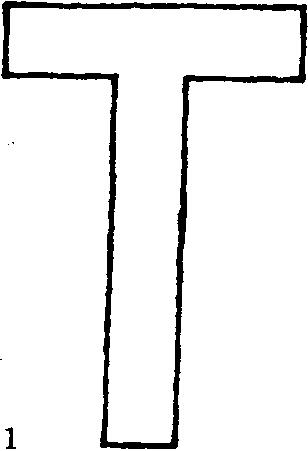
Fig. 01. Cross T-shaped "Antonievsky".
In the southern and eastern parts of the Roman Empire for the execution of criminals, an instrument was used, called the Egyptian cross and reminding the letter "T" in European languages \u200b\u200b(Fig. 1). "Greek letter T, - wrote Count A.S. Uvarov, - one of the forms of the cross used for crucifixes " (Christian symbolism, M., 1908, p. 76).
"The number 300, expressed in Greek through the letter T, also served since the time of the apostolic to designate Cross, — reports the famous liturgist archimandrite Gabriel. -This Greek letter T is found in the inscription of the tomb of the III century, open in the Saint catacombs Callista. (...) Such an image of the letter T is found on one carnelian engraved in the II century " (Guide to liturgicke, Tver, 1886, p. 344).
The same arguing and the saint Dimitri Rostov: "The image of Greek," Tav "called the angel of the Lord made a" sign on the cheakhi " (Iz. 9; 4)
God's people in Jerusalem, for fence from impending death, saw in the revelation of the Holy Ezekiel prophet. "(...) If we decide to this image at the top of the Title of Christ in this way (Fig. 2), immediately the quarter-side cross of Christ see. Consequently, I saw there Ezekiel transformation of the fourth round cross "(wanted list, M., 1855, kN. 2, ch. 24, p. 458). The same approves and Tortellian:

Fig. 02. Cross T-shaped "Antonievsky".
"Greek letter Tav and Our Latin t complies with a real form Cross, which, according to the prophecy, will have to be depicted on our Chelas in True Jerusalem ".
"If the letter t is in the Christian monograms, then this letter is thus located in order to apply it to all others, since T was considered not only a symbol, but even the very image of the cross. An example of such a monogram is on the 3rd century sarcophage "
(Gr. A.S. Uvarov, p. 81).
According to church legend, Holy Anthony The Great wore the cross-Tau on his clothes. Or, for example, holy Zenon Bishop of the city of Verona, put on the roof erected by the Basilica in 362, the cross in the form of T.
Cross "Egyptian hieroglyph anch".

Fig. 03. Cross "Egyptian hieroglyph anch".
Jesus Christ - the winner of death - the mouths of Raspororok Solomon announced: "Who found Me, T. found a life » (Prov. 8; 35), and on the embodiment I eased: "I am a resurrection and a life» (Ying 11; 25). Already from the first centuries of Christianity for the symbolic image of the cross Library used, resembling it in form, egyptian hieroglyph "Anch", which denoted the concept of "life" (Fig. 3).
Cross "letter".
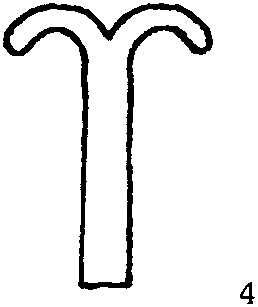
Fig. 04. Cross "letter".
And other letters (from different languages) The following are also used by the first Christians as the symbols of the cross. Such an image of the cross did not scare the pagans, being familiar for them. "And indeed, as can be seen from the inscriptions of Sinai, - reports Count A.S.Uvarov, - Letter (Fig. 4) was taken for the symbol and for the present image Cross"(Christian symbolism, part 1, p. 81). In the first centuries, Christianity was important, of course, not the art side of the symbolic image, but the convenience of its use to the insertion concept.
Cross "Anchor-like".
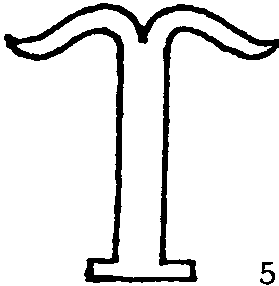
Fig. 05. Cross "Anchor-like".
Initially, this symbol was caught by archaeologists at the Solun inscription of the III-th century, in Rome - in the 230th, and in Gaul - in 474. And from the "Christian symbolism" we find out that: in the caves of the pretext, there were plates without any inscriptions, with one image "Anchors"(Fig. 5) "(gr. A.S. Uvarov, p. 114).
In his message the apostle Pavel He says that Christians have the opportunity "Take a presets Hope (i.e. cross), which for the soul is as if anchor safe andstrong" (Heb. 6; 18-19).
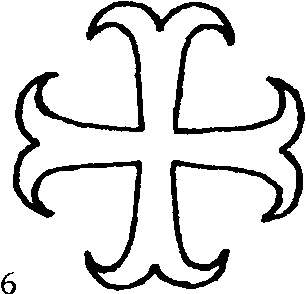
Fig. 06. Cross "Anchoroid".
This, according to the word apostle, "anchor",the symbolically covered cross from the cringe of the wrong things, and the correctly opening the genuine meaning, how to get rid of the consequences of sin, and there is our strong hope (Fig. 6).

Fig. 07. Cross "Anchoroid".
Church ship, figuratively speaking, in the waves of violent time life delivers everyone to a quiet marina life eternal. Therefore, "anchor", being cruciform, became a symbol of hope for the steady fruit of the Cross of Christian - the kingdom of heaven, although the Greeks and Romans, also using this sign, assimilated him the meaning of the strength of the earth only (Fig. 7).
Cross Monogram "Preconstaninovsky".
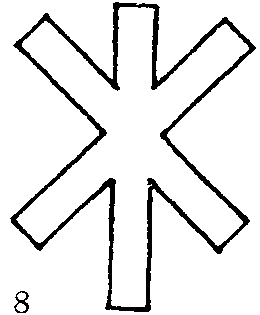
Fig. 08. Monogram "Preconstantinovsky Monogram".
Famous specialist in liturgicalology - Archimandrite Gabriel writes that "in the monogram, drawn on the tombstone (III century) and having the form of the St. Andrew's cross, vertically crossed lard (Fig. 8), there is a piercedimage of the Cross "(RUN. p. 343).

Fig. 09. Monogram Monogram "Preconstaninovsky".
This monogram was composed of Greek initial letters The name of Jesus Christ, by crossing them alignment: namely the letters "I" (iot) and the letters "X" (hee).
This monogram is often found in the postal station; For example, we can see its image in a mosaic design on the arches of the Archbishop Capella of the end of the V-th century in Ravenna (Fig. 9).
Cross Monogram "Persoy Pastor".

Fig. 10. Cross Monogram "Persoy Pastor".
Propous The Shepherd Christ The Lord told the staff Moses miraculous force (Ex. 4; 2-5) in the sign Pastoral Power over the verbal sheep of the Old Testament Church, then and Straight Aarona (Ex. 7; 8-10). Divine Father, Prophet's mouth Michea, Says to the only beggar son: "Pasi your people Wand Yours, your heritage sheep " (Mih 7; 14). "I esm shepherd kind: shepherd kind believes his life for sheep " (Ying. 10; 11), - answers the Heavenly Father Beloved Son.
Count A.S. Uvarov, describing the finds of the catacomb, reported that: "The clay lamp, found in the Roman caves, shows us very clear how the swept bent Staff instead Total symbol Shepherd. At the bottom of this lamp, the staff depicts crossing the letter X, the first letter of the name of Christ, that in the aggregate forms the monogram of the Savior. " (Christ. Symb. P. 184).
Initially, the form of the Episcopian rod was similar to the shepherd staff, the upper part of which is bent down (Fig. 10). All the bishops of Byzantium were awarded the "pasta straight" only from the hands of the emperors, and in the XVII-Mist of the century, all Russian patriarchs received their primitive rod from the hands of the reigning self-containers.
Cross "Burgundy" or "Andreevsky".
Saint Martyr Justin Philosopher, explaining the question of where the cruciform symbols began to be known before Christmas, claimed: "The fact that Plato speaks in Timey (...) about the Son of God (...) that God placed him in the Universe like the letter X, he also borrowed u Moses. For in Moses Scriptures, it was told that (...) Moses on inspiration and the action of God took copper and did Cross image (...) And told the people: if you look at this image and you will tell you, you will be saved through it (Numbers. 21; 8) (in. 3; 14). (...) Plato read it, and not knowing accurately and without realizing that it was an image (vertical) cross, but seeing the figure of the letter X, said that the power closest to the first God was in the Universe like the letter X "(apology 1, § 60).

The shape of the cross Andrew» , — wrote archimandrit Gabriel(Ruble. P. 345).
Peter "Cross of the Holy Andrei .
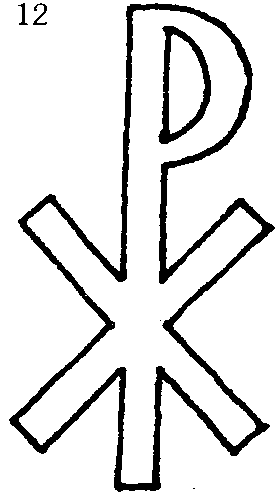
Fig. 12. Cross "Monogram Constantine".
The letter "X" of the Greek alphabet has served as the basis for monogram characters, and not only because it hid the name of Christ; After all, as you know, "Ancient Writers find The shape of the cross In the letter X, which is called Andreevsky, because, according to legend, the apostle cumshot on such a cross Andrew» , — wrote archimandrit Gabriel(Ruble. P. 345).
About 1700 the anointed of God Peter Great, wanting to express a religious difference orthodox Russia From the recent West, put the image of the Andreevsky Cross (Fig. 11) on state coat of arms, on your hand press, on the naval flag, etc. His own explanation says that: "Cross of the Holy Andrei (accepted) for the sake of the sacred baptism of Russia from this Apostle ".
Cross "Monogram Constantine".

Fig. 13. Cross "Monogram Constantine".
As you know, this monogram has become quite widespread:
messenger was for the first time on the famous bronze coin of the emperor Tranaya Decia (249-251) in the Lidiorsky city of Meonia (Figure 13);
was depicted on a vessel 397;
it was cut on the tombstones of the first five centuries or, for example,
mixedly depicted on the plaster in the caves of the Saint Sict (gr. A.S. Uvarov, p. 85).
Cross monogram "postman".
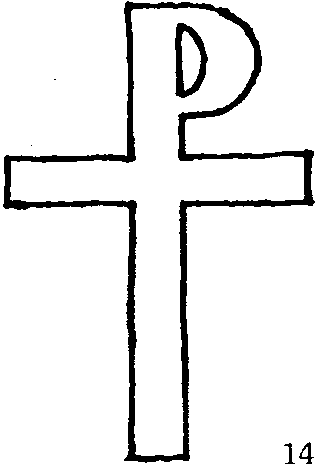
Fig. 14. The cross is a monogram "postman".
"Sometimes the letter T, - writes Archimandrite Gabriel, -it is found in conjunction with the letter P, which can be seen in the tomb of St. Callist in the epitaph "(p. 344). This monogram is also available on Greek plates found in Megara, and on the tombstones of the cemetery of St. Matthew in the city of dash.
Words "be King your" (John 19: 14) Pilate first of all pointed to the noble origin of Jesus from the tsarist dynasty David Unlike faded self-stamped four-fold, and the thought of this writing outlined "Over his head"(Matt. 27; 37), which, of course, caused dissatisfaction with the corrupted high priests, who killed the power of God from the kings. And that is why the apostles, preaching the resurrection of a crucified Christ and openly " writing, -as can be seen from the Acts of Apostolic, - tsaret Jesus " (Acts. 17; 7), suffered from the clergy through the deceived people strong persecution.
Greek letter " R"(RO) - the first in the word "PAX", in Roman "REX", In Russian, the king, - symbolizing the king of Jesus, is above the letter " T."(Tav), meaning his cross; And together they resemble words from the evangelism of the apostolic, that our whole strength and wisdom in crucifix King (1 Cor. 1; 23-24).
Thus, "and this monogram (Fig. 14), according to the interpretation of the Holy Justina, He served as the sign of the Cross of Christ (...), received such an extensive value in symbolism only after the first monogram (Fig. 12). (...) In Rome (...), it became generally used not before 355 years, and in Gaul - not before the 5th century "(gr. Uvarov, p. 77).
Cross monogram "Sun-shaped".
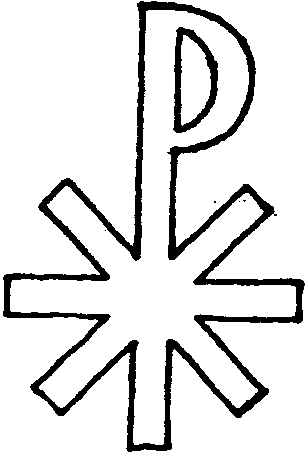
Fig. 15. Cross monogram "Sun-shaped".
Already on the coins of the IV century there is a monogram " I.»-Isus" Xp"" Sun-shaped "," for God, -as the Holy Scripture teaches, - there is the sun» (Ps. 84; 12).
The most famous "Konstantinovskaya" (Fig. 12) "The monogram was subjected to some changes: even the trait or letter was added. I.", Crossing the monogram across" (Archim. Gabriel, p. 344),
This "sun-shaped" cross (Fig. 15), symbolizes the execution of the prophecy about the all-flowing and all-standing force of the Cross of Christ: "AND for you, whitewaster before my name, will go Sun truth and healing B. rays him - arranged the Holy Spirit Prophet Malachia, -and you will pour the wicked; For they will be ash under the footsteps of your legs " (4; 2-3).
Cross Monogram "Trident".
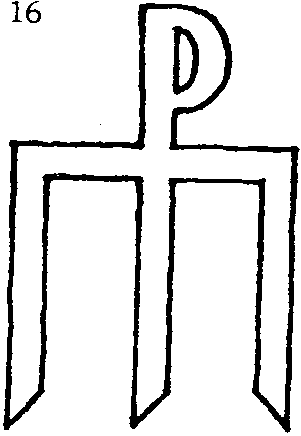
Fig. 16. Cross Monogram "Trident".
When the Savior took place near the sea of \u200b\u200bGalilean, he saw fishermen throwing networks into the water, the future of his students. "And he says to them: go for me, and I will do you Covers people " (MF. 4; 19). And later, sitting by the sea, he affected the people with their parables: "Like the kingdom of heaven non-man dropped into the sea and capturing fish of all kinds " (Matt. 13; 47). "Recognizing the symbolic meaning of the kingdom of heaven in the shells for fisheries," the "Christian symbolism" says, "we can assume that all formulas relating to the same concept, Icon expressed by these common symbols. To the same projectiles need to be attributed trident, who were caught fish, as they now catch by Bagrami "(gr. A.S. Uvarov, p. 147). Thus, the troggy monogram of Christ (Fig. 16) has long been involved in the sacrament of baptism, as calming online God's kingdom. For example, on ancient monument The sculptor Evtropy was carved by the inscription, talking about the adoption of her baptism and ending with a monogram-trident (gr. A.S. Uvarov, p. 99).
Cross monogram "Konstantinovsky".

Fig. 17. Cross Monogram "Konstantinovsky".
From the church archeology and history, it is known that on the ancient monuments of writing and architecture it is often encountered by the option of combining letters " Chill"And" RO»In the monogram of the saint king Constantine God-in-friendly successor of Christ-Lord on the throne of David (Fig. 17).
Only from the IV century, the gradually depicted cross began to be released from the monogram shell, lose its symbolic color, approaching the present form, which resembles the letter " T.", Then the letter" X.».
These changes in the image of the cross occurred due to the emergence of Christian statehood based on its open reverence and glorification.
Cross round "T-shirt".According to the ancient way, as evidenced Horace and Marcial, Christians scratched baked bread crustaceans to make it easier to break it. But long before Jesus Christ, this was in the east with a symbolic transformation: the cut-off cross, separating the integer on the part, connects them to the consuming, Heals separation.
Such round breads are depicted, for example, on the syntrophion inscriptions separated into four parts of the cross (Fig. 18), and on the tombstones from the Cave of Saint Lukin separated by six parts of the monogram III-th century (Fig. 19).
Fig. 18-19. Cross round "T-shirt".
In direct connection with the mysteriousness of communion on the path, the peelones and other things were depicted bread as a symbol of the Body of Christ, refractable for our sins.
The Circle itself before the Nativity of Christ was depicted as the absence of another idea of \u200b\u200bimmortality and eternity. Now I think we understand that the Son of God is infinite a circle, -according to the saint Clement Alexandrian, - in which all the forces converge. "
The cross is a catacomb or "victory sign".
"In the catacombs and in general, on ancient monuments, there are incomparably more often crosses of fourth, than any other form, - Notes Archimandrite Gabriel. -This image of the cross especially became important for Christians since God himself showed the sign of the fourth round Cross. " (Ruble. P. 345).
About how it all happened, thoroughly narrates the famous historian Eustian Pamphil in Ov "The book of the first about the life of the Blessed Tsar Constantine".
"Once, at midday of the day, when the sun began to lean to the West," said the king, - I saw my own eyes from the light and lying in the sun Cross sign with the inscription "sim Winning "!This spectacle was horrified as his own and all the army, which followed him and continued to contemplate the miracle (ch. 28).
It was in the 28th day of October 312, when Konstantin With the army came against Maksenia, concluded in Rome. This is wonderful Phenomenon of the Cross Among the white day are witnessed and many modern writers, by eyewitnesses.
Especially important evidence of the confessor Artemy in front of Julian apostate, with when interrogation Artemysaid: "Christ urged Christ Constantine When he led the war against Maksenia, showing him at noon Cross sign radiantly shining over the sun and star-like Roman letters predicted to him victory at war. Formerly there, we have seen his sign and read letters, seen him and all the army:
many witnesses to this and in your troops, if only you want to ask them "(ch. 29).
Power of God Holy Emperor Konstantin Wrapped brilliant victory Over Tiran Maxent, who was doing the wicked and villainous deeds in Rome "(ch. 39).
Thus, the cross, formerly before the pagans, a gentleman to the gentleman, became under the emperor Konstantine Great victory Victory -celebrations of Christianity over the paganism and the subject of the deepest reverence.
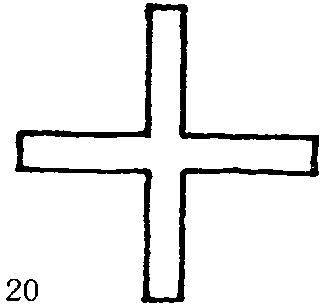
Fig. 20. Cross Catacombnye or "Victory Sign."
For example, according to the novels of the Emperor Justinian, Such crosses (Fig. 20) were supposed to be put on contracts and mean signature "worthy of all confidence" (BN. 73, ch. 8). An acts (solutions) of cathedrals also fastened the image of the cross. In one of the imperial resolutions it says: "We command any cathedral act, which is approved The sign of the Holy Cross Christ, so storing and so he to be like it is ".
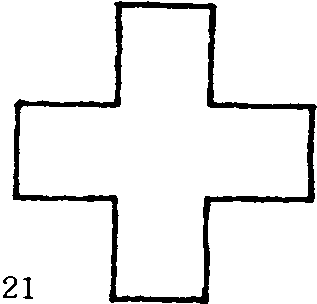
Fig. 21. Cross Catacomb or "Victory Sign."
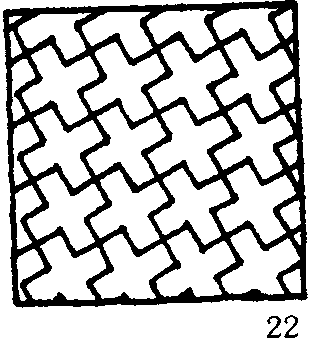
Fig. 22. Cross Catacomb or "Victory Sign."
In general, this shape of the cross (Fig. 21) is most often used in ornaments (Fig. 22) to decorate temples, icons, priesthood and other church utensils.
Cross in Russia "Patriarch", or in the West "Lorensky".
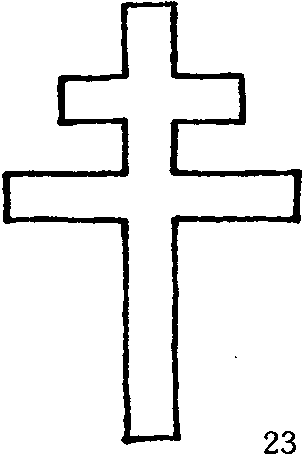
Fig. 23. Cross in Russia "Patriarch", or in the West "Lorensky".
The fact that has been proving the use of the so-called "Middle of the past millennium patriarch Cross, "is confirmed by numerous data from the field of church archeology. This is such a form six-pointed cross (Fig. 23) was depicted on the press of the governor of the Byzantine emperor in the city of Korsuni.
The same kind of the cross was widely distributed in the West entitled "Lorensky".
For an example from Russian tradition, we will point out at least the big copper cross of St. Petersburg stored in the Museum named after Andrei Rublev Abraamia The Rostov XVIII century, cast on the iconographic samples of the XI-th century.
The cross is four-star or Latin "Immissa".
In the textbook "Temple of God and church Services»It is reported that" a strong motive for reading the direct image of the cross, not a monogram, was the acquisition of the honest and life-giving cross of the Mother of St. King Constantine, equivalent to Elena. As the direct image of the cross is distributed, it acquires gradually the crucifix form "(SPB., 1912, p. 46).
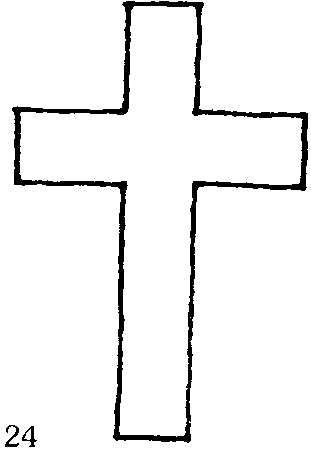
Fig. 24. Cross Four-inner or Latin "Immissa".
In the West, the most commonly commonly cross is the Cross "Immissa" (Fig. 24), which solutions - admirers of imaginary antiquity - are negligiously called (for some reason in Polish) "Latin's rookery" or "Rymski", which means - the Roman cross. These loyers of the fourth round cross and Eastern admirers, apparently, it is necessary to recall that, according to the Gospel, the cassette was distributed by the Empire precisely by the Romans and, of course, Roman was considered.
"And not in terms of the number of woods, not by the number of the ends, the Cross of Christ is worshiped by us, but by Christ himself, the most Holy Blood of whom he ordained, - Discalcier Cold Calm Dimitri Rostov, - and showing wonderful strength, any cross does not act by himself, but by the power of Christ crucified on it and the calling of the Most Holy name "(wanted list, kN. 2, ch. 24).
Adopted by the Universal Church in use "Canon Honest cross"- Creation of the Holy Gregory. Sinaita - Heats the Divine Power of the Cross, containing all the heavenly, earthly and underworld: "Cross allone, Quinochny strength, the apostle of saying "(song. 1)," fourth Cross, having height, depth and latitude "(song 4).
Starting from the III century, when, for the first time, such crosses appeared in Roman catacombs, the entire Orthodox East and today uses this shape of the cross as even to all others.
Cross "Papal".
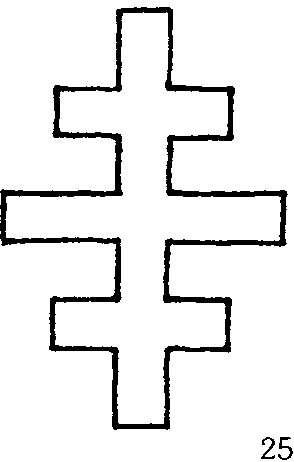
Fig. 25. Cross "Papal".
This shape of the cross is most often used in the bishops and papal worship services of the Roman Church in the XIII-XV centuries and therefore got the name of the "Papal Cross" (Fig. 25). To the question of the foot shown at the right angle to the cross, will answer the words of the saint Dimitri Rostov, who said: "I love the foot of the godfather, thereby oblique, not obliquely And the custom of the crescents and crestes, as the churches that are not perspective, do not challenge, beyond "(wanted list, kN. 2, ch. 24).
Cross six-pointed "Russian-Orthodox".
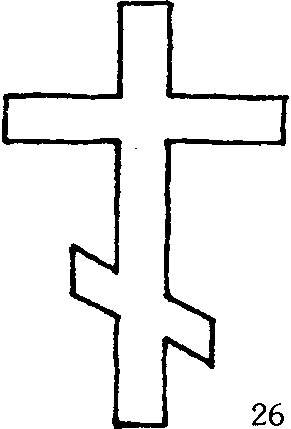
Fig. 26. Cross Six-pin "Russian-Orthodox".
The question of the reason for the drawing of the lower crossbar inclined It is quite convincingly explained by the liturgical text of the 9th hour of service Cross Lord: "Through the two robber, the robbery robberly acquired the cross is yours: it is a blessing of the hug, to heave the rust of hustle, to the other of the same way from the lack of interest to the knowledge of theology." In other words, both in Calvary for two robbers, and in life for each person, the cross serves as Meril, as if the weights of its inner state.
One robbing reducing into hell "grave hugs ", he uttered by Christ, he became as if crosswise scales leaning down under this terrible weight; another robber released by repentance and the words of the Savior: "You will go with me worship in paradise"(Luke 23; 43), the cross assumes the kingdom of heaven.
This shape of the cross in Russia was consumed since ancient times: for example, a Poklonnaya Cross, arranged in 1161 by Rev. Efrosinia Prince Polotsk, was six-pointed.
The six-pointed Orthodox cross along with others was used in Russian Heraldry: for example, on the coat of arms of the Kherson province, as explained in the "Russian Hercob" (p. 193), a silver Russian cross is depicted (Fig. 26).
Orthodox cross cross.

Fig. 27. Cross Ospener Orthodox.
Octicore - most corresponds to the historically reliable form of the cross, on which was Already crucified Christ, as evidenced TERTULLYAN, Saint IrinaLyon, Saint Justin Philosopher and others. "And when Christ, the Lord on his shoulders wearing a cross, then the cross was still four-pointed; because There was still no on it n. Title nor foothrite. (...) There was no foot, because Christ was not raised on the cross and warriors, not knowing how long the legs of Christ got, did not attach the foot, finished it already on Calvary, "Cooking Solvikov Saint Dimitri Rostov (wanted list, kN. 2, ch. 24). There was also no Title on the cross before the crucifixion of Christ, because, as the Gospel reports, first "Crucified it" (In. 19; 18), and then only "Pilate wrote an inscription and put (by their order) on cross(John 19; 19). It is first to share the lot "His clothes" Warriors "Cave it"(Matt. 27; 35), but only then "His inscription put on his head, meaning the guilt of it: this is Jesus, the king of the Jews" (Matt. 27; 37).
So, fourth The cross of Christ, who is romant to Calvary, who all who fell into the lack of a split, call the seal of the Antichrist, is referred to in Saint Evgeli yet "His cross" (Matt. 27; 32. MK. 15; 21, Lux. 23; 26, in. 19; 17), that is also, as well as a sign and fit after the crucifixion (in. 19; 25). In Russia, the cross of this form (Fig. 27) was consumed more often than others.
Cross sadded.

Fig. 28. Cross Sedmone.
This shape of the cross (Fig. 28) is quite often found on the icons of the Northern Letters, for example, the Pskov School of the XV-th century: the image of the Holy Paraskeva Fridays with Life - from the Historical Museum, or the image of Saint Dimitri Solunsky - from Russian; or Moscow school: "Crucifixion" of work Dionysius -from the Tretyakov, dated to the 1500th year.
We see the sadded cross and on the domes of Russian temples: Let us give, for example, the Wooden Ilinsk Church of 1786 in the village of Vazentsy (Holy Rus, St. Petersburg, 1993, Ill. 129) or we can see it over the entrance to the Cathedral of the Resurrection New Jerusalem Monastery, built Patriarch Nikon.
At one time, the theologians were warmly discussed by the question of: what mystical and dogmatical meaning has foot How is part of the redemption cross?
The fact is that old Testament Priesthood got, so to speak, the opportunity to bring victims (as one of the conditions) thanks to "gold fit To the throne attached " (2 pairs. 9; 18), which, as well, we have Christians, in God's establishment, consecrated through alupation: "And loving them, -said the Lord - alive of discharge and all accessories it, (...) and Foot it. And consecrate them, and there will be a great shrine: everything touched upon them will heat up " (Ex. 30; 26-29).
In this way, Foot The godfather is the part of the New Testament Altar, who mystically indicates priest The ministry of the Savior of the world, voluntarily paid by his death for other people's sins: For the Son of God "Our sins of himself raised his body on the tree" (1 Pet. 2; 24) Cross, "By sacrificing yourself" (Heb. 7; 27) and, thus, "Having done High Priest forever (Heb. 6; 20), approved in his face "Priesthood incredit" (Heb. 7; 24).
And it is approved in the "Orthodox confession of the Oriental Patriakhov": "He performed on the cross priest's position Bring yourself to the sacrifice of God and the Father for the redemption of the human race "(M., 1900, p. 38).
But let's not confuse Foot Saint Cross, opening us one of the mysterious sides, with two other footsteps from Scripture.
"David Says: "Excuse the Lord, our God, and worship Poddle His; Holy It! "(Ps. 99; 5). BUT Isaiah From the face of Christ says: "We will glorify Foot My feet " (Is. 60; 13), - explains the saint Dimitri Rostovsky. There are a foot, which has become ordered, and there is a footboard that is not specified.
God says in Isaino prophecy: "Sky my throne, and the earth - Substitution My feet " (IP. 66; 1): This foot - earth No one should be collected, but only God, the Creator of her. And he is written in Psalms: "Said the Lord (Father) to the Lord (Son) mY: SENDING FOREST ME, DONE TO PUB TO YOUR ENes in Foot Your feet " (Ps. 109; 1). And this foot of God enemies God, who will want to be collected? What the foot is collected David Does it over? " (Wrenching, kN. 2, ch. 24).
To this question, the Word of God itself is answered by the Savior: "And when I will be ascended from Earth» (In. 12; 32) - " from footage My feet " (Is. 66; 1), then "We will glorify Foot My feet " (Is. 60; 13) - "The foot of the altar"(Ex. 30; 28) New Testament - Saint Cross, Lyuhaous as we confess, Lord, "Your enemies in Foot Your feet "(Ps. 109; 1), and therefore "Worship poddle (Cross) His; holy it "" (Ps. 99; 5), « fit to the throne attached "(2 Couple. nine; eighteen).
Cross "Ternist Crown".
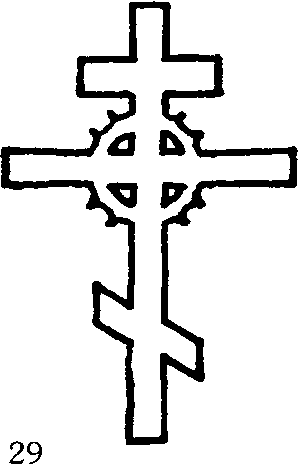
Fig. 29. Cross "Ternist Crown".
Image of Cross S. Ternovin (Fig. 29) is used for many centuries from the different peoples who adopted Christianity. But instead of numerous examples from the ancient Greek-Roman tradition, we present a few cases of its use in later times on sources, which was at hand. Cross S. ternovin can be seen on the pages of ancient Armenian handwritten books The period of the Cilician Kingdom (Matenadaran, M., 1991, p. 100);
on the icon"The glorification of the Cross" of the XIIth century from the Tretyakov (V.N. Lazarev, Novgorod Icon, M., 1976, p. 11);
on the Staritsky Celebration of the XIV-th century crossed; on the pokrovka "Golgotha" - the monastic contribution of Queen Anastasia Romanova 1557;
on silver dish XVI century (Novodevichy Monastery, M., 1968, Ill. 37), etc.
God said to the sinless Adam that "Cursed the earth for you. Torony And the wolf creates you "(Gen. 3; 17-18). And the new sinless Adam - Jesus Christ - voluntarily took over and other people's sins, and death as a consequence of them and Turn Suffering, K. her leading by a thorny path. Christ the apostles Matthew (27; 29), Mark (15; 17) and John (19; 2) tell that "Warriors, Spread Crown of Tern Mold him on the head "," We were healed by the wounds " (Is. 53; 5). From here it is clear why since then wreath Symbolizes victory and reward, starting with the books of the New Testament: "Crown of Truth" (2 Tim. 4; 8), "Crown of Glory" (1 Pet. 5; 4), "Crown of Life"(Iac. 1; 12 and apoc, 2; 10).
Cross "Viselice".
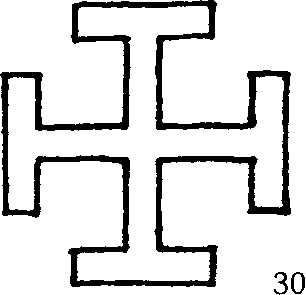
Fig. 30. Cross "Viselice".
This shape of the cross is very widely used when decorating temples, liturgical objects, saint closers, and in particular, as you can see, bishops of omophorms on the icons of "Three Ecumenical Teachers" (Fig. 30-31).

Fig. 31. Cross "Viselice".
"If anyone tells you, are you crucified? You are a bright voice and with a cheerful lion answer: worshiping and not stop worshiping. If you laughed, you make it aware of it, because it comes out, "teaches us, decorated with Sim Cross in images (Fig. 30), the Universal Saint JohnZlatoust (conversation 54, on Matt.).
The cross of any form has unstead beauty and a life-giving force, and everyone who knows this God's wisdom exclaims with the apostle: "I (...) I wish to boil (...) only Cross Our Lord Jesus Christ " (Gal. 6; 14)!
Cross "Grape Line".
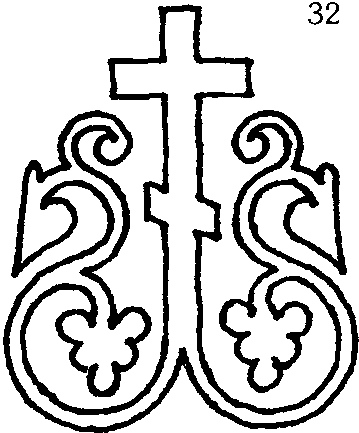
Fig. 32. Cross "Vine".
"I esm True vine, And my father - grapework " (In. 15; 1). So Jesus Christ called himself, the head of the church planned by him, the only source and guide of the spiritual, holy life for all the Orthodox-believers, which the essence of his body members.
"I esm vine, And you branches; Who stays in me, and I am in it, that when wearing a lot of fetus " (In. 15; 5).
"These words of the Savior himself laid the foundation of symbolism Grape vines -i wrote Count A. S. Uvarov in his work "Christian symbolism," - most importantly Grape vine (Fig. 32) For Christians were in a symbolic connection with the sacrament of communion "(p. 172-173).
Cross "petal".

Fig. 33. Cross "Lepalic".
The manifold of the forms of the cross has always been recognized by the Church is quite natural. According to the expression of Rev. Feodora Studit - "Cross every form There is a true cross. " Very often found in church fine art "Petal" cross (Fig. 33), which, for example, we see on the Omophore of the Saint Gregory.Wonderworker mosaic of the XI-th century Cathedral of Saint Sophia Kiev.
"A variety of sensual signs we hierarchically erected to a uniform connection with God"- explains the famous Church Teacher Saint John Damaskin. From visible to the invisible, from the temporary to eternity - this is the path of man, the Church of the Sladen to God through the comprehension of fertile symbols. The history of their diversity is inseparable from the history of the salvation of mankind.
Cross "Greek" or the anodus "Korsunchik".
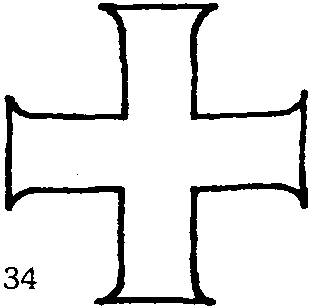
Fig. 34. Cross "Greek" or anodus "Korsunchik".
Traditional for Byzantium and most often and widely used form of the so-called "Greek Cross". The same cross is considered to be known, both the oldest "Russian cross", since, according to church legend, Holy Prince Vladimir Brought out from Corsun, where he was baptized, it was such a cross (Fig. 34) and installed it on the shore of the Dnieper in Kiev. A similar quarter-side cross has been preserved and now in the Kiev Sofia Cathedral, carved on the marble board of the Tomb of the Prince Yaroslav Son Saint Vladimir Equivalent.
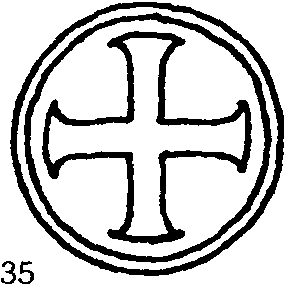
Fig. 35. Cross "Greek" or the anodus "Korsunchik".
Often, for instructions on the universal importance of the Cross of Christ, as a microcole cross is depicted in a circle, symbolizing the cosmologically the sphere of heaven (Fig. 35).
Cross "rapid" with a crescent.
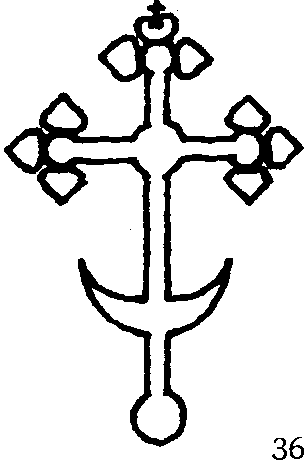
Fig. 36. Cross "rapid" with a crescent.
It is not surprising that the question of the cross with the crescent is often asked, since "rapidly" are located in the most prominent place. For example, those crosses are decorated with the Dome of the Saint Sophia Vologda Cathedral, built in 1570 (Fig. 36).

Fig. 37. Cross "raspberry" with a crescent ".
Typical for the Domongolian period, this form of the Dome Cross is often found in the Pskovshchina, like the Church of the Church of the Assumption of the Virgin in the village of Meletovo, erected in 1461 (Fig. 37).
In general, symbolism orthodox church inexplicable from the point of view of aesthetic (and therefore static) perception, but, on the contrary, it is completely disclosed to understand precisely in liturgical dynamics, since almost all elements of temple symbolism, in different places Worship, assimilate different meanings.
"And the great heaven appeared in the sky the Omen:wife clothed in the sun, -the revelation says John Theologian, - under her legs moon" (Apoc. 12; 1), and sacred wisdom explains: this moon marks font, In which the church, having broken down in Christ, is taught in him, in the sun truth.
Crescent is also cradle Bethlehemskaya, who accepted the Gogin of Christ; Crescent is and bowl Eucharistic, in which the body of Christ is located;
Crescent is and ship the church, driven by the feeder-Christ;
Crescent is and anchor hopes, the godmar of Christ;
Crescent - it's an ancient serpent,popped with a cross and believed as the enemy of God under the feet of Christ.
Cross "Trilisset".
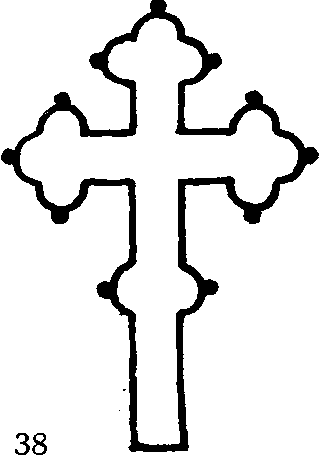
Fig. 38. Cross "Trilisset".
In Russia, this shape of the cross is consumed more often than others for the manufacture of hand-drawed crosses (Fig. 38). But, however, we can see her and on state symbols. "Golden Russian Thritetile Cross, standing on a silver tipped crescent"According to the "Russian Hercobnik", he was depicted on the coat of arms of Tiflis province (p. 191).
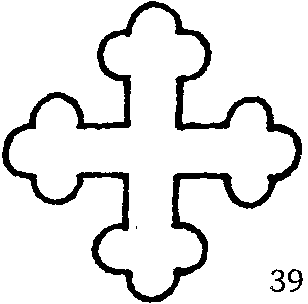
Fig. 39. Cross Golden "Trilister".
The golden "tribal" (Fig. 39) is also on the coat of arms of the Orenburg province, on the coat of arms of the city of Troitsk Penza province, the city of Akhtyrki Kharkiv and the city of Spassk, Tambov province, on the coat of arms gubern city Chernigov, etc.
Cross "Maltese" or "Georgievsky".
Patriarch Jacob prophetically honored the cross when "Faith bowed, -as the apostle says Pavel, - to the top of the boered your " (Heb. 11, 21), "Wand, - explains the Holy JohnDamaskin, - served An image of the cross"(About holy icons, 3 ate.).
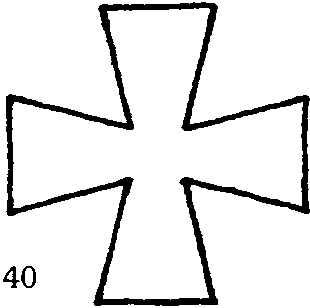
Fig. 40. Cross "Maltese" or "Georgievsky".
That is why today there is a cross over the handle of the bishop rod (Fig. 40), "for cross we, - Writes saint Simeon Solunsky, - we guide and go, we are imprinted, detecting and, killing passions, are attracted to Christ " (Ch. 80). In addition to the ever-widespread church use, this shape of the cross, for example, was officially accepted by the Order of the Holy John Jerusalem, formed on Malta Island and openly fought against Masonry, organized, as you know, murder Russian emperor Paul Petrovich - the patron saint of Maltese. So the name appeared - "Maltese Cross" (Fig. 40).
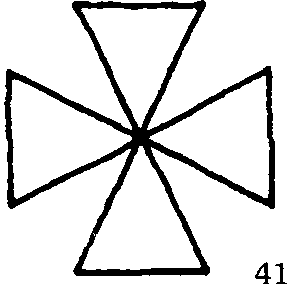
Fig. 41. Cross "Maltese" or "Georgievsky".
![]()
Fig. 42. Cross "Maltese" or "Georgievsky".

Fig. 43-44. Cross "Maltese" or "Georgievsky".
According to Russian heraldik, Golden "Maltese" crosses had some cities on their arms, for example:
Zolotonosha (Fig. 40), Mirgorod (41) and Zenkov (41) of the Poltava province;
Pogar (40), Bonza (40) and Konotop (41) Chernihiv province;
Kovel (40) of Volyn, Pavlovsk (44) from St. Petersburg, Window (40) Kurland, Belozersk (40) Novgorod province, Perm (42) and Elizavet-Polskaya (43) provisions and others.
Everyone who was awarded the crosses of the Holy Georgia The victorious (Fig. 43) of all four degrees was named, as you know, "Georgievsky Cavaliers."
Cross "Refractory-Konstantinovsky".
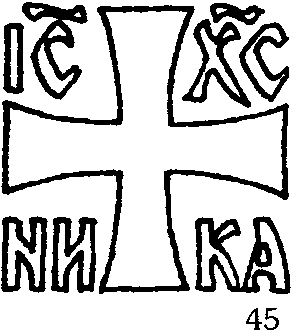
Fig. 45. Cross "Refractory-Konstantinovsky".
For the first time these words in Greek "Ic.xp.nika", What means - "Jesus Christ - winner", Gold were written on three big crosses in Tsargrad by the Equal Emperor Konstantin.
"You're a winning ladies to sit down on my throne, How and I won And I sat down with my father on his throne "(Apoc. 3; 21), - Savior says, Winner Hell and death.
By ancient traditionThe image of the cross is printed on the prosforas with adding words meaning this godf victory Christ: "IS.Khr.nik." This "Refractory" seal (Fig. 45) means redemption of sinners from sinful captivity , or, otherwise, the great price of our redemption.
Cross stained "braided".

Fig. 46. \u200b\u200bThe cross is a stabbed "braided".
"This weaves received from ancient Christian art- Professor V.N. Shepkin is authoritative, - where it is known in the thread and mosaic. Byzantine weekee, in turn, moves to the Slavs, in which it is in ancient era Especially common in verbal manuscripts "
(Tutorial of Russian Paleography, M., 1920, p. 51).
Fig. 47. Cross Stainer "Braided".

Fig. 48. Cross Stainer "Braided".

Fig. 49. The cross is a stabbed "braided".
Most often, the images of the "wicker" crosses (Fig. 46-49) are found like decorations of the Bulgarian and Russian anti-shirt books.
Cross "Crypidoid".
White Field lilies called in Slavyansky "Krynavery. In the book "Russian copper casting" We can see a native "Cross with cringed Even from Serensk XI-XII centuries. Such crosses are known in the Byzantine antiquities of the XI-XII centuries, and in the XIV-XV centuries were widespread in Russia "(M., 1993, p. 159).

Fig. 50. Cross "Crynchoid".
In general, the symbolic firing of the cross consisting of flowers Lilies (Fig. 50), reminds the words of the Savior about his ministry: "I, - says the Lord — lily vallee! " (Song. 2; 1).
"For the sake of me, which is, he goes to the valley, - writes Origen about Christ - and, come to the valley, is done Lill.Instead of the Tree of Life, which was planted in paradise God, he became Flower the whole field, that is, the whole world and all the earth ".
"Listen to me, pious children, -calls for all the Word of God, - flowelate, as lily» (Sirah. 39; 16-18), that is, in other words, wisely and a pious life be pure Fimyami from all over.
Cross Quartwear "Doodle".
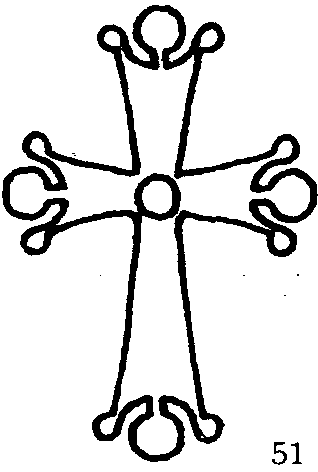
Fig. 51. Cross Quartwear "Doodle".
Sprinkling the glooring tree Drops of blood Christ forever told the cross his strength.
Greek Gospel of the II century from state Public Library opens with a leaf with a beautiful image "Doodle" (Fig. 51) of the quarter-end cross (Byzantine miniature, M., 1977, Table 30).

Fig. 52. Cross Quartwear "Doodle".
And also, for example, we recall that among the copper in-art crosses, cast in the first centuries of the second millennium, as you know, often meet "Capper" (Fig. 52) Encolpiona (in Grech. - "on the chest).
At the beginning of Christ "Blood drops, falling on earth " (Luke 22; 44), became a lesson to combat sin even "before blood» (Evr. 12; 4); When on the cross from it "Expired blood And water " (Ying. 19; 34), then an example was taught to fight evil even to death.
"His (Savior), having loved us and washed us from our sins BloodNORMA " (Apoc. 1; 5) who saved us « Blood Cross Your " (Count 1; 20), - Glory forever!
Cross "Crucifix".
One of the first images of Crupifying Jesus Christ that came to us only to the V-Mu Age, on the doors of the Church of Saint Sabina in Rome.
FROM VI-th century The Savior began to be depicted in a long robe of a collussia - as if leaning a cross. This image of Christ can be seen in the early bronze and silver crosses Byzantine and Syrian origin of the XVII-IX centuries.
Holy vi-th century Anastasiy Sinait wrote apologetic (in Greek. - "Protection") an essay "against the akefals" - the heretical sect, denying the compound in Christ of two natives. To this essay, he put the image of the Savior's crucifix as argument against monophimitism . He spells the correspondencers of his work together with the text to transfer inviolable and attached image to it, as, however, can and see on the manuscript of the Vienna Library.
Another, even more ancient of the preserved, the crucifixion is located on the miniature of the gospel of Raves from the Publone Monastery. This manuscript 586 belongs to the Florentine library of the Holy Lawrence.
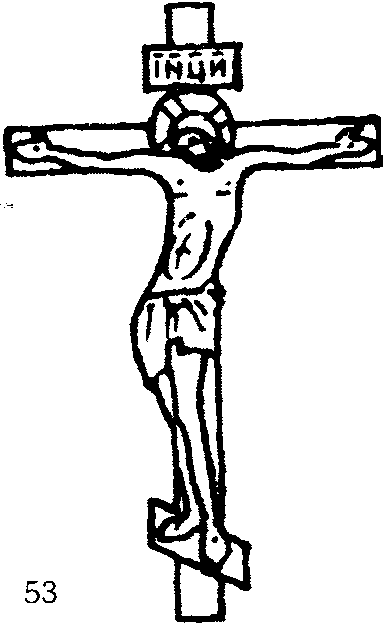
Fig. 53. Cross "Crucifix".
Until the IX century inclusive, Christ was depicted on the cross not only alive, risen, but also triumphant (Fig. 53), - and only in the X-M century appeared images dead Christ (Fig. 54).
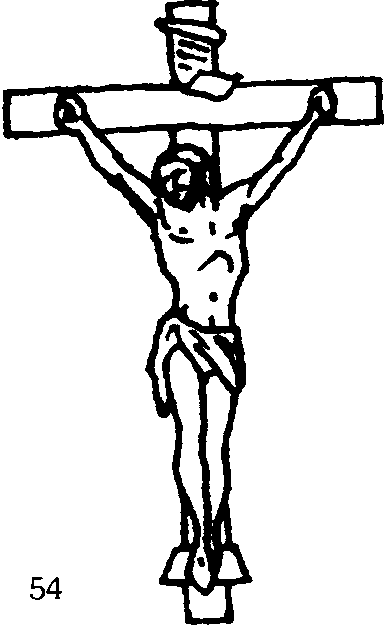
Fig. 54. Cross "Crucifix".
Since the most ancient times, cross-crucifixes, both in the east and in the West, had a crossbar to stop the feet of the crucifier, and his feet were depicted intense Each separate With its nail (Fig. 53). The image of Christ with crossed feet, naught one nail (Fig. 54), first appeared, as an innovation, in the West in the second half of the XIII century.
On the cross of the Savior Savior, the Greek letters have written Oωn meaning - "True Sunny» , because "God said Moses: I AM Sunny» (Ex. 3; 14), discovering its own name, expressing selfishness, eternity and immutability of the beings of God.
From Orthodox Dogmata. Cross (or Redemption) undoubtedly follows the idea that the death of the Lord is redemption of all, vocation of all Peoples. Only cross, Unlike other executions, I gave the opportunity to die Jesus with open hands, Consider "All ends lands (Is. 45; 22).
Therefore, in the tradition of Orthodoxy - depict the Savior All-keeperexactly how risen Cross-carrier, holding and calling in His arms All universe I. carrying on me New Testament Altar - Cross (Fig. 53). The prophet also spoke about Heersmia. from the face of christianship: "We will put the tree in its bread" (11; 19), that is - the Tree of the Great Let's leave the body Christ, the Bread Heavenly Called (SVT. Dimitri Height. Cyt. Op.).
And traditionally the Catholic image of the crucifix, with provistent in the hands of Christ (Fig. 54), on the contrary, has a task to show as It all happened, to portray the death suffering and death And not at all what Essentially there is the eternal fruit of the cross - his Celebration.
Orthodoxy invariably teaches all sinners suffering necessary for humble assimilation by the fetus of the atonement - the Holy Spirit sent by the sinless redemputor, which the pride does not understand the paws, their sinful sufferings seekers of participation in sinless And therefore Sprinkment Passions of Christ And thus flowing into a censual heresy "self-absorption".
Skimnic or "Calvary" cross.
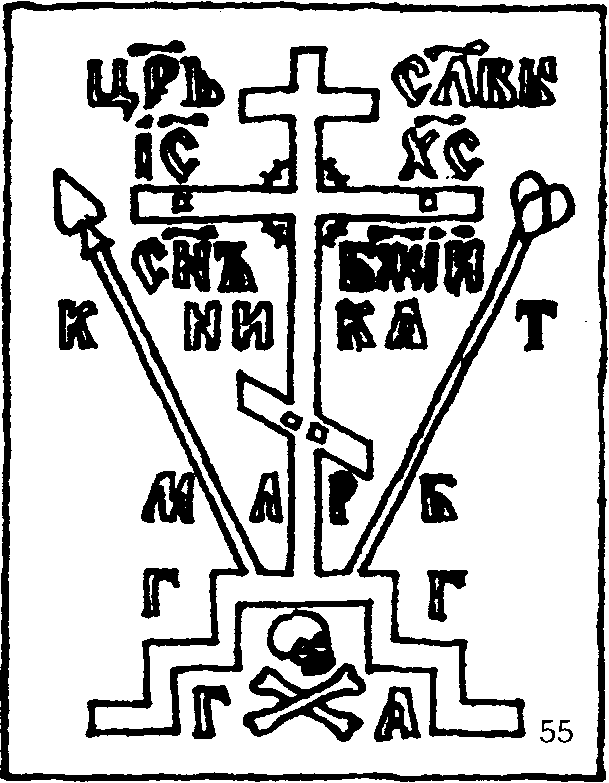
Fig. 55. Skimnic or Golgotha \u200b\u200bCross.
Inscriptions and cryptograms on Russian crosses have always been much more diverse than in Greek.
From the XI century under the lower oblique crossbar of the eight-pointed cross, a symbolic image of Adam's head, buried by legend on Calvary (Heb. -"Frontal place"), where Christ was crucified. "At the place where I will be buried, the Word of God will crucifant and irrigates the blood of my skull"- Adam prophesied. These of his words clarify the tradition of producing in Russia to the XVI century to produce near the image "Calvary" the following notation:
« M.L.R.B."- Lob's place will crucify," G.G."- Golgotha \u200b\u200bMountain," G.A.. " - Head of Adamov; And the bones of the hands lying before the head are depicted: right on the left, as when burial or communion.
Letters " TO"And" T.»Mean copy Sotnik Longgin I. cane With a sponge depicted along the cross.
Abscriptions are placed on the middle crossbar: " IS.» « Xs."- the name of Jesus Christ;
and under it: "NIKA" - winner;
on the title (plate) or about it inscription: "SN" "BZHI" -Son of God or Abbreviation "I.N.TS.I." - Jesus Nazori King Jewish;
the inscription above the title: "Cours" "Clamps" -King of Glory.
Such crosses are made to embroider on the pleasures of the Great and Angelic Shima;
three crosses on Paramana and five on the catwalk: on the brow, on the chest, on both shoulders and back.
Cross "Calvary" (Fig. 55) is also portrayed on the burial Savane, which marks the preservation of vows, data during baptism, like the white Savan of the newcomers, meaning the cleansing from sin.
Unlike Cross's image depicting directly crucified Christ Cross sign Transfers his spiritual value, Pictures it real meaning, But the cross himself is not.
"Cross keeper of the whole universe, the cross the beauty of the church, the cross, the kings of the Power, the cross is true statement, the cross the angel of Glory, the cross of the demons of the ulcer" - Approves the absolute truth of the holiday of the exaltation of the life-giving cross.
Cross "Gammatic", in the West "Crux Gammata".
"God of war of heaven and earthly, - Saint exclaims Philaret Moscow, — Your help The winners of the prophet not without Yours MANUTION put a monument to victory and nare it "Stone Aid» (1 King. 7; 12). Here is a monument, no doubt the blessed and sacred, because they are blessed and will holy Lord Assistant. "Bless - asks the saint of the Lord - monument not only courage and victories of Christ-loving Russian warriors, but also Your help who are victorious and invincible (Words and speeches, M., 1877, vol. 3, p. 130; Words and speeches, M., 1885, vol. 5, p. 14).
But do Christ-the Redeemer of the monuments, which kill his holy cross? Is it worthy of the blessing of God's brigade, forced Russian warriors - Alyosha of the liberator, Marshal Zhukov and others - to trample his cross?
According to the 73rd Rules of the Fifth-Sixth Ecumenical Cathedral, everything, Who depicts the cross where he may be Popirate legs, indulge Cursed and take away From the church: "Alone the life-giving cross revealed to us the salvation: it applies to us any thorough of consuming, and it will be assumed to be the honor of the honor that we are saved from the ancient sin. Therefore, thoughts, and in a word, and a feeling of worship, bring him, we command: the image of the cross, stressed by some on the ground, is completely sourcing, so that our victory is not Offended Poprianing walking. And so, from now on, the image of the cross overlapping on Earth Out of» .
All, and especially Christians, useful for the soul to know and never forget that the Universal Church of Christ takes the gammma form of the cross for two thousand years and that "Cross anything shapes - As teaches the Holy Feodor Studit, - there is true Cross"!
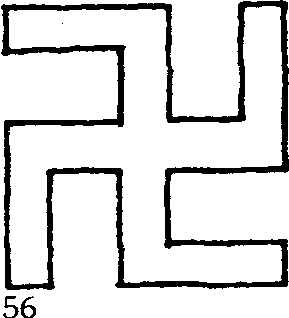
Fig. 56. Cross "Gammatic", in the West "Crux Gammata".
From famous church and secular specialists in history and archeology can be found that among different shapes Cross "There was also a form Hammatic cross (Fig. 56), consisting of (Greek Letter) gamma », - According to Archimandrite Gabriel in the book "Guide to liturgical, or science of Orthodox worship, for spiritual seminaries", Edition of 1886 in Tver (p. 344).
And from the book "Christian symbolism" Count A.S. Uvarov can be found that the gammatic cross is depicted on the pit (vessel for communion) already in the IV century (p. 36).
In the same album "Byzantine miniature" You can read that in the IX century by order of the Empress Feodora In the imperial scripting, a gospel was made, decorated with a gold ornament from gammatic crosses, with elements of the ancient ornament of Meander (M., 1977, p. 13, tab. 4).

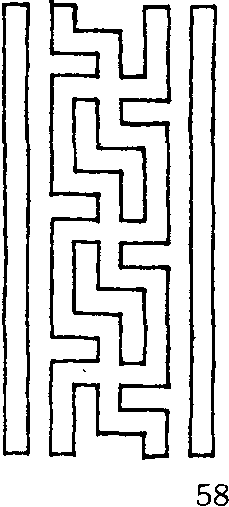
Fig. 58. Cross "Gammatic", in the West "Crux Gammata".
![]()
Fig. 60. Cross "Gammatic", in the West "Crux Gammata".
And in the album V.N. Lazareva can see the ornament from the gammma cross, which are decorated:
and the arches of the monastery of Khosios Lucas in the XI-century (Fig. 58), and the apse of the Cathedral of St. Sophia Kievskaya in the XI-century (Fig. 60), and the walls of the church of St. George in Kurbinovo in the XII century (Fig. 61) , and the Western Wall of Istanbul Cachrie, Jami of the beginning of the XIV-th century (Fig. 59) (Tables, M., 1986, Fig. 156, 170, 350, 469), as well as the bishops of the Byzantine period and many frescoes in the Balkans (Fig. 57).
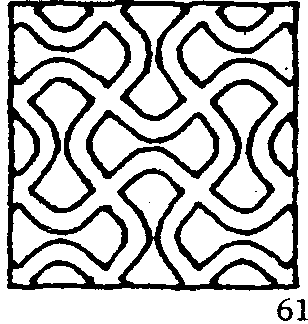
Fig. 61. Cross "Gammatic", in the West "Crux Gammata".

Fig. 59. The Cross "Gammatic", in the West "Crux Gammata".

Fig. 57. Cross "Gammatic", in the West "Crux Gammata".
And in the book "Mathenadaran" depicts the quarter-side cross surrounded
twelve gammma crosses, where it seems that: "An illustration of the Echmiadzinsky Gospel reflect Converter communication two covenants, Approving the most important dogmas Christianity » (p. 30).
The Old Testament Altar, being the transformation of the New Testament Altar - Cross of Christ, had the established horns from four ends, which were noticed by the sacrificial Blood, which was a prototype of the blood of Christ, the coming shed her on the cross. Not only the deep connection of the two covenants, but also their essential difference was the apostle: "Any (Old Testament) the priest is daily in the ministry and multi-time Brings the same victims that never can exstruct sins. He same (Christ), bring one Sacrifice for sins, forever squealing the sidelines, -wrote Pavel, -for O. one I have forever made perfect consecrated " (Heb. 10; 11-14).
One Byzantine emperor, wanting to more accurately express his anti-Christian politics, said right: i am fighting the cross! And now the servants of Antichrist - Crossroads and Crosses - again wait for the Holy Cross.
By decree of Yeltsin dated March 23, the Russian Academy of Sciences prepared a document "On the essence and signs of fascism" , which is stated about fascist symbolism, but there is not a word about the essence and signs of this symbolism. This document fully arranged the president, a moment of the signatory project of a new "law", where, in particular, it was said:
"Article 229 shall be amended as follows: (...) Desecration fascist symbolism And attributes (...) is punished with imprisonment of up to five years with confiscation "(Russian newspaper, June 21, 1995). Thus, "suggests" that the image of the cross "desets"!
Truly there is no way to admit fascist symbols Hundreds of images of the gammmatic cross in Christians, for example:
cast and engraved on the church utensils of the Domongolian period;
mosaic under the dome of the Cathedral of Hagia Sophia Kiev;
icon painted - on the vestments of the Byzantine saint;
relief ornament around the doors of Nizhny Novgorod Cathedral;
embroidered on the Feloni of the Moscow Temple of Nikola, that in puffs and so on.
Why did SIGHHY-SAMBALISTS slipped a rampant Führer Hitler "Gammat"? - This is a third-time question; Although, if you judge the fruits, then the Holy Cross, consecrating the whole universe, today "law" is called (sorry, Lord!) "Determining Symbol", and similar attacks, as well known, it is bad. "For many, - Warning apostle Pavel, - come as enemies cross Christ. Their end - death " (FLP. 3; 18-19). The cross is given to the church as the banner of the victory of the kingdom of grace over the kingdom of sinAnd therefore, let the mouth of the horns of the cross of the crucifier crucified on it Jesus Christ!
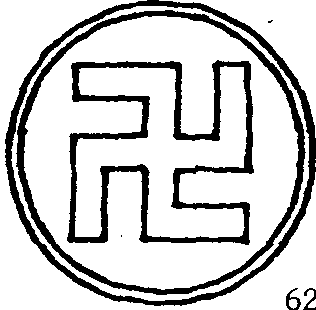
Fig. 62. Cross "Gammatic", in the West "Crux Gammata".
Already the first Christians in Roman catacombs depicted a gammatic cross, which many Indo-European peoples corresponded to the concept of "eternity" or "happiness" and was called "Swastika".
Petr Andreevich Zhilir, according to the protocols from the case of N. A. Sokolov, explained the reason for the widespread use of the sovereigns by Alexandra Feodorovna Hammatic Crosses, "which Her Majesty used to set often on her things as a sign of well-being ... She did them like this: (N. Sross , The death of the royal family, Frankfurt am Main, 1987, p. 235).
For example, on the hood of the royal car (as seen on the photo given), a gammatic cross was installed in a vertical position (Fig. 62). Also, the Empress painted it with a black pencil in the house of Ipatiev: and on the wallpaper of his bed and on the door jamb with the inscription "17/30 Apr. (Elya) 1918.", the day of arrival of the royal family in Ekaterinburg.
Mystical This shape of the cross reflects the whole secret of the industriality of God, and dogmatically She expresses - all the completeness of church creed.
Still Patriarch Jacob awarded mystical vision "Stairs standing on earth and getting to the sky", two parts of which persuasive, copold Cross, Those earthly combined now with heaven, a man with God; and on the steps of which "Angels God's go up and downward » (Gen. 28; 12), meaning the congestion of the lags of God's saving care and commercial worm. After all, this "The world lying in evil" (1 in. 5; 19), only Cross gives a clean concept about the victorious everywhere by the presence of God and leads man "By new and alive" (Heb. 10; 19) right on the sky; The godfather of which has a meeting place and reconciliation of creatures and the Creator. Bogochlek Jesus Christ, explaining the mystical side of the cross, said that "from now you will see the sky hole and angels of God ascending and descendingto the Son of Human (In. 1; 51), in other words, giving Cross sign They will mentally "go up", reflecting on his (Savior) of the Divine nature, and "downward", contemplating his incarnation and a descent to hell.

Fig. 11. Cross "Burgundy" or "Andreevsky".
Stairs Jacob, Reminded by the X-shaped "Burgundy" cross (Fig. 11), is a mystical indication of two ways, from the sky to the ground and from the ground to the sky:
first - Leaving the father of the son-fiancé for the sake of the Church-Bride, and second - Taking her wife and return with her to the house of the Father.
Apostle Pavel, "Being knees before Father" (Eph. 3;14) Heavenly, prays about the approval of the faithful in love in order "Could comprehend with all the saints what is) latitude and longitude, and depth and height » (Eph. 3; 18)! With saint John Damascus can comprehend that this is the symbol of God's marriage - Cross: "Like four end Cross It is held and connected by its focus and power of God keeps Height and depth, longitude and latitude, that is, all visible and invisible creature "(accurate presentation orthodox faith, kN. 4, ch. eleven).
And with the saint Dimitri. Rostov, we can comprehend that this is the power of the cross over all three levels of being: "The congestion (...) of the median crossing shows that everything is contained by the divine force; All Heavenly Upper The end is contained, under the bottom, and all the earth is two ends The precessive drove of the godfather. (...) Banning height heavenly Depth - underwater breadth and longitude earthly The contents of the Messenger of the cross "(wanted list, kN. 2, ch. 24).
Symbolic image of a cross-shaped staircase, from the vision of the patriarch Jacob Combined with the three levels of the Church (from the prayer of the apostle Paul) It will help to penetrate the secrecy of the dogmatic content of both parts (Fig. 63), in the intersection of the forming gammatic cross.
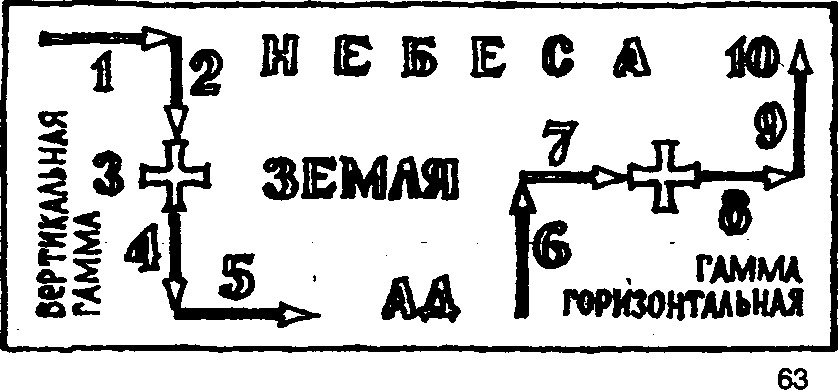
Fig. 63. Cross "Gammatic", in the West "Crux Gammata".
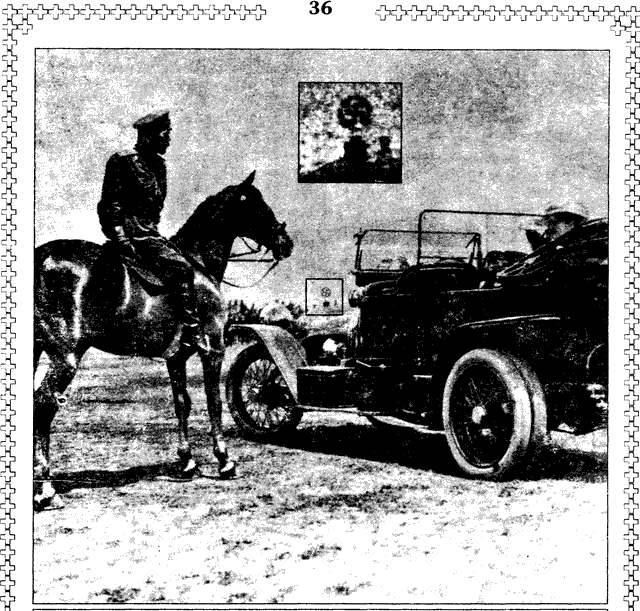
In the Foto:
Sovereign Nikolai Aleksandrovich on the horse and the sovereign of Alexander Feodorovna in his car, on the hood of the Majmatic Cross in a circle, on the hood of Her Majesty.
Cross Card "Visitnik", Copy, Sponge and Nail.
The motives of the outrageous desecration and saint of the holy cross conscious crusading and crosses are quite explained. But when we see Christians drawn into this vile case, it is impossible to be silent, because - according to the word of the saint Vasily Great - "God aroused silence"!
So called « playing cards» Available, unfortunately, in many houses, there is an instrument of informality, through which a person certainly comes into contact with the demons - the enemies of God. All four carcasses "MASTA" It is not that other people like the Cross of Christ, together with other Christian Equipients with the sacred objects: spear, sponge and nails, that is, all that was the tools of suffering and the death of the Divine Redeemer. And by ignorance many people throwing "In Fool" , allow me to be thrust gentlemen Taking, for example, a map with the image of a cross "Triliste", that is, the Cross of Christ, who worships polivary, and, the pops of her casually with the words (sorry, Lord!) "Trefa", What is translated from yiddish means "bad" or "evil spirits"! Yes, moreover, these cough, who won in suicide, essentially believe that this cross "Beating" some lousy "Trump Six", not at all knowing that "trump" and "Kosher" Written, for example, in Latin, is equally. It would be time to clarify the true rules for all the cartoon games in which "In fools" remain everything Playing: they are that ritual sacrifices, in Jewish called talmudists "Kosher" (i.e "Clean"), allegedly have the power over the life-giving cross! If you know that playing cards cannot be used for other purposes, except determined christian shrines On the joy of Besam , then the role of maps and in "Divination" - These nasty quest for demonic revelations. Does it be necessary to prove that any of the maps touched to the deck and who did not bring sincere repentance for confessions in sins of blasphemy and blasphemy is guaranteed to recruit in hell?
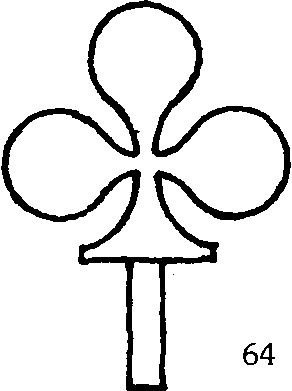
Fig. 64. Cross Card "Visitnik" - "Trephists", otherwise "Krop".
So, if "clubs" - It's a hula of fracturing gamblers on specifically pictures Crosses (Fig. 64), called them "Cross", what then means - "VINI", "Worms" and "diamonds"? I will not bother with the transfer and these curses into Russian, since we do not have a tutorial yidisha; I'd better open New Testament For shedding the tribe of God unbearable for them for them.
Saint Ignatius Bryanchanins B. ludial inclination Looks: "Get acquainted with a good time Study him in order Avoid The influence of it "(edema. p. 549).
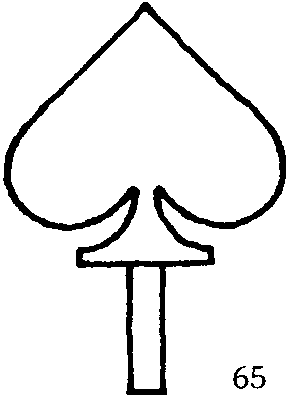
Fig. 65. Cartridge "Vini", or otherwise - "peaks".
Matter "Vini", or otherwise "Peaks", Julit Evangelskaya peak (Fig. 65), that is a spear Holy Martyr LongginSotnik. As predicted about his Split Lord, the litters of the prophet Zechariah,what "Review on the one that Pierce» (12; 10), and happened: "One of the warriors(Longin) pierce Pierce His ribs " (John 19; 34).
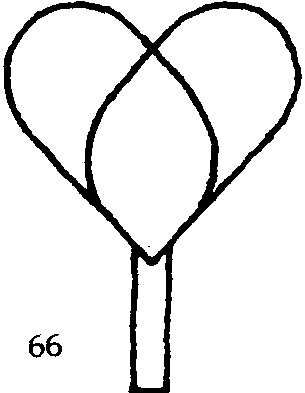
Fig. 66. The Cherry's Cream Maste, otherwise - "Cane Sponge".
Matter "Worms" Julit Evangelskaya sponge (Fig. 66) on the Cane. How I warned about my poisoning Christ, Rasporoko David What warriors "I gave me food bile, And in my thirst I got me vinegar» (Ps. 68; 22) and came true: "One of them took sponge Drown vinegar And, imposing on cane, gave him to drink " (Matt. 27; 48).

Fig. 67. The tambourine is the "tambourine" - "quadrogenous nails".
Matter "diamonds" hoolitis gospel forged quadruple Nails (Fig. 67), which were nailed hands and feet of the Savior to the Tree of the Cross. How did the Lord prophesied about his navigation suggestion The mouth of the psalmopevtsa David what « pierce My hands and my feet " (Ps. 22; 17), and turned out: the apostle Thomas, Speed "if not i will see his wounds from his hands from nails and not put the fingers of mine in the wound from nails And I will not put my hands in ribs He does not believe " (In. 20; 25), "Beloved because I saw" (In. 20; 29); and apostle Peter, Turning to the tribesmen, testified: "Israeli men! -he spoke, - Jesus Nogori (...) You took and, Prigidiv (koki) hands (Romans) flawless, killed; But God raised him. "(Acts 2; 22, 24). Crashing with Christ the unskilled robber, like the current gamblers, hooling the godpanis of the Son of God and, in the vicinity, in the neraskost, forever went to hell; And the robber is prudent, submitting an example, repented on the cross and thus inherited eternal life with God blessing. Therefore, we will remember firmly that for us, Christians, there can be no other object of hope and hopes, no other support in life, no other unifying and inspiring us banners, except for the only saving sign invincible cross Lord!
Moscow, March-April 1997
Introduction ..........................................................................33
- Cross T-shaped "Antonievsky" .. .................................5
- Cross "Egyptian hieroglyph anch." ................................. 7
- Cross "letter" ............. .......................................... ..7
- Cross "Anchor-like" ................................................... 7
- Cross Monogramme "Preconstaninovsky" ........................ ..8
- Cross Monogram "Persoy Pastor" ... .............................. 8
- Cross "Burgundy" or "Andreevsky" .............................. 9
- Cross "Monogram Constantine" ................................. .10
- Cross Monogram "Postconstantinovsky" .................. 11
- Cross monogram "Sun-form" ............ .. ............12
- Cross Monogram "Trident". ................................. 12
- Cross Monogram "Konstantinovsky" ............. ............ 13
- Cross Round "T-shirt" ...................................... .13
- Cross Catacombnye or "Victory Sign" ............ .. ......... 14
- Cross in Russia "Patriarch" or in the West "Lorensky" ... .15
- The cross is four-sided or Latin "Immissiona" ............ ..16
- Cross "Papal" ............. ............................................. 16
- Cross Stone "Russian-Orthodox" ................17
- Orthodox Cross Orthodox ................ ............ ..18
- Cross sadded ................................. .. ............... 18
- Cross "Ternist Crown" ....... ....................................... 20
- Cross "Viselice" ... .. .................................... ..21
- Cross "Grape Line" .......................................... ..21
- Cross "petal" ...................................................22
- Cross "Greek" or anodus "Korsunchik" .. .... ... .22
- Cross "rapid" with a crescent .............................23
- Cross "Tribe" ....... ............................................... .. ... .23
- Cross "Maltese" or "Georgievsky" ............ .. ...... .. ... ..24
- Cross "Refractory-Konstantinovsky" ............. ...... .. ...... .25
- Cross Stained "Braided" ................................ ..25
- Cross "Crynchoid" ....................................... .. ......... 26
- Cross Quartwear "Doodle" ........................................27
- Cross "Crucifix" ......... .. .................................... .. ...... ..27
- Skimnic or "Calvary" cross ........................ .. ... ..29
- Cross "Gammatic", in the West "Crux Gammata" ....... ...... .30
- Cross Card "Visitnik", copy, sponge and nail ..........36
"There is a true cross in every form," the Rev. Feodor taught Studit back in the 9th century. And in our time it happens that in the temples refuse to take notes with four-spin "Greek" crosses, forcing them to correct them to eight-pointed "Orthodox". Is there any one, the "right" cross? We asked to understand this, we asked the head of the icon-painted school of Hmm, Associate Professor, Hegumen Luka (Golovkov) and the leading specialist in Starography, Candidate of Art History Svetlana Gnutov.
What was the cross on which Christ crucified?
"The cross is the symbol of the sufferings of Christ, and not only a symbol, and an instrument through which the Lord saved us," says igumen Luka (heads). "Therefore, a cross is the greatest shrine through which God's help is performed."
The history of this Christian symbol began with the fact that the Holy Queen Elena in 326 found a cross on which Christ was crucified. However, how accurately he looked, is now unknown. Only two separate crossbars were found, and near the plate and foot. There were no grooves or holes on the crossbars, so the opportunity to determine how they were attached to each other, no. "There is such an opinion that this cross could be in the form of the letter" t ", that is, three-end," says the leading specialist in Starography, a candidate of art history Svetlana Gnutova. - Romans had a practice while practicing on such crosses, but this does not mean that Christ Cross It was exactly that. He could be four-pointed, and eight-pointed. "
The discussion about the "right" cross arose today. The dispute about what Cross is the right, eight-spin or four-ring, the Orthodox and Old Believers, and the latter called the simple four-spin cross "Printing Antichrist". In defense of the four-pointed cross, Saint John Kronstadt, who dedicated to this topic a candidate dissertation (he defended it in 1855 in SPBD) "On the Cross of Christ, in the glory of imaginary old goods": "Who does not know and not honor Holy Cross About four ends from the elder and before the hotel? And this well-known shape of the cross, this ancient shrine Faith, printing all the sacraments, like something new, unknown by our ancestors, which appeared yesterday, our imaginary old workers suspected, sucked, drove among the White Day, extinguishing the bulbs that from the very beginning of Christianity and accomplishment served and serves as a source of sanctification and salvation for all. Watching only an eight-spin cross, or a tris-contained, that is, a straight tree and three diameters, located in a well-known way, they call the seal of the antichrist and the abomination of the cross the Cross the so-called fourthone, representing the true and consuming shape of the cross! " 
St. John Kronstadt explains: "Byzantine" four-pin cross in fact there is a cross "Russian", since, according to church legend, Holy equalizable prince Vladimir brought out of Corsun, where he was baptized, it was such a cross and first installed him on the shore of the Dnieper in Kiev. This four-way cross has been preserved in the Kiev Sofia Cathedral, carved on a marble board of the tomb prince Yaroslava Wise, Son of St. Vladimir. " But, protecting the four-spin cross, St. John makes the conclusion that it is necessary to read the same and the other, since the principal difference itself of the cross for believers does not have. Igumen Luka: "In the Orthodox Church, its holiness does not depend on the shape of the cross, provided that the cross is made and consecrated precisely as a Christian symbol, and not initially made as a sign, for example, the sun or part of the household ornament or decoration. Chin consecrated crosses for that and became mandatory in the Russian Church, as well as icons. Interestingly, for example, in Greece, the sanctification of icons and crosses is not necessarily, because Christian traditions in society are more stable. " 
Why do we not wear a fish sign?
Until the IV century, while the persecution of Christians continued, the images of the cross were openly done (including so that the persecutors do not abill on him), so the first Christians came up with ways to encrypt the cross. That is why the first christian symbol Fished fish. In Greek "Fish" - ίχθύς - an acronym of the Greek phrase "iησοvς χριστoς θεov υιoς σωτήρ" - "Jesus Christ of God's Son Savior." The image of two fish on the sides of the vertical anchor with the top in the form of a cross was used as a secret "password" on Christian meetings. "But the fish did not become the same symbol of Christianity as a cross," explains Igumen Luka, "because the fish is an allegory, allegory." Holy Fathers on Fiat Sixth Trill Universal Cathedral 691-692 was directly condemned and banned allegory, because it is a kind of detective image, which only leads to Christ, unlike the direct image of Christ himself - our Savior and Cross of Christ - the symbol of his suffering. The allegory was gone from the practice of the Orthodox Church for a long time and only ten centuries began to penetrate the east under the influence of the Catholic West. "
The first encrypted images of the cross himself were found in Roman catacombs II and III centuries. The researchers found that the tomb of Christians affected by faith often painted a palm branch as a symbol of eternity, a brazier - as a symbol of martyrdom (it was such a way of execution to be distributed in the first centuries) and Christogram - an alphabetic reduction of the name of Christ - or a monogram consisting of the first And the last letters of the Greek alphabet α and ω - according to the word of the Lord in the revelation of John the theologian: "Az, Ey Alpha and Omega, the beginning and the end" (Rev. 1, 8). Sometimes these symbols have painted together and have failed in such a way that the cross image of the cross was guessed.
When the first "legal" cross appeared
The Holy Equal-Apostles King Konstantin (IV) "In a dream, Christ was, the Son of God, with the sign in the sky, and commanded, making a banner like this seen in the sky, to use him to protect him from attacking enemies," writes church historian Eusevia Pamphil. - This banner happened to see us with their own eyes. It had the following form: on a long, covered with a golden spear was a cross reya, which formed the sign of the cross with a spear, and on it two first letters named Christ, combined together. " 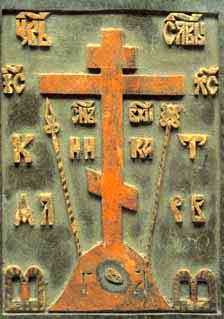
These letters, called subsequently by Monogram Konstantin, the king wore on his helmet. After the wonderful phenomenon of St. Konstantin ordered to make the images of the cross on the shields of his warriors and installed three memorable cross in Constantinople with a gold inscription in Greek "ic.xp.nika", which means "Jesus Christ is a winner." The first cross with the inscription "Jesus" he installed on triumphant gates The urban square, the second with the inscription "Christ" - in the Roman column, and the third with the inscription "Winner" - on a high marble pillar on the city's bread square. From this it began to universal reverence of the Cross of Christ.
"The holy images were everywhere in order to, more often visible, they encouraged us to love prime," explains Igumen Luka. - After all, everything that surrounds us, one way or another affects us, evil and kind. The Holy Reminder of the Lord helps the soul to rush to the thought and heart to God. "
In from as wrote about these times SVT. John Zlatoust: "The cross is located everywhere in Glava: at home, on the square, in solitude, on the roads, on the mountains, on the hills, on the plains, on the sea, on the ship masts, on the islands, on the beds, on the clothes, on weapons, on feasts, on the vessels of silver and gold, on gemstone, on wall painting ... so in the opposition, everyone admire this amazing gift. " 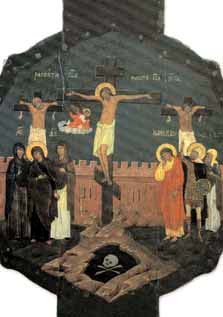
It is interesting that since in the Christian world the opportunity to legally make the image of the cross, encrypted inscriptions and Christograms did not disappear, and moved, as an addition, the crosses themselves. This tradition came to Russia. Since the XI century, under the lower braid crossbar of the eight-pointed cross-crucifix, which was installed in the temples, the symbolic image of the head of Adam, buried, according to legend, on Calvary. The inscriptions are a brief commentary of the circumstances of the crucifixions of the Lord, the meaning of his godfather death and decipher so: "M.L.R.B." - "The frontal place will crucify", "G.G." - Mount Golgotha, the letters "K" and "T" mean a copy of the warrior and a cane with a sponge depicted along the cross. Above the middle crossbar is placed inscriptions: "IC" "XS", and under it: "Nika" - "Winner"; on the plate or near the inscription: "SN BJ" - "Son of God", "I.N.C.I" - "Jesus Nazi Tsar Judaian"; Over the sign of the inscription: "CZP" - "King of Glory". "G.A." - "Head of Adamov"; And the bones of the hands lying before the head are depicted: right on the left, as when burial or communion.
Catholic or orthodox crucifixion?
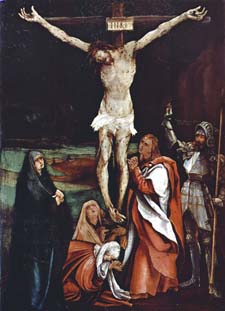
"The catholic crucifix is \u200b\u200boften written more naturally," says Svetlana Gnutova. "The Savior is depicted in his arms, the image conveys the martyrdom and death of Christ. In the ancient Russian images, Christ is depicted by the risen and reigning. Christ is shown in force - as a winner holding and calling the entire universe in his arms. "
In the XVI century, Moscow Dyack Ivan Mikhailovich, Vicalcan even spoke against crosses, where Christ is depicted on the cross with compressed in a fist, and not open palms. "Christ on the cross spreads his arms to collect us," explains Igumen Luka, "so that we rushed to the sky so that our aspiration was always to the city. Therefore, the cross is the symbol of collecting us together so that we are united with the Lord! " 
Another difference catholic crucifixion - Christ crucified with three nails, that is, nails are drunk in both hands, and the feet feet are folded together and nailed with one nail. In the Orthodox crucifix, each foot of the Savior is naught separately by its nail. Igumen Luka: "This is a fairly ancient tradition. In the XIII century, Custom Icons for Latinians were written on Sinai, where Christ was already naught by three nails, and in the XV century such cruises become a generally accepted Latin norm. However, it is only a tribute tradition, which we must respect and save, but not to look for any theological burden. In the Sinai Monastery, the icons of the crucified three nails of the Lord are in the temple and reverass on a par with Orthodox crucifixes. "
Cross - Love Crucified
"The iconography of the cross develops like any other iconography. The cross can be decorated with ornament or stones, but it cannot be in any way to become a 12-end or 16-end, "says Svetlana Gnutova. "The manifold of the forms of the cross in christian tradition "This is a variety of glorifying the cross, and not a change in its meaning," explains Igumen Luka. - The gymnographers glorified the cross with many prayers, as well as the icon painters in different ways glorify the cross of the Lord. For example, the iconopus appeared an image of the Camation - the royal or princely pendant in the form of a crescent, we usually use the icons of the Virgin and Christ, - soon she appeared on the cross to emphasize his royal meaning.
Of course, we need to use crosses that are written in orthodox tradition. After all, the cross on the chest is not only help to which we resort to prayers, but also testimony of our faith. Although, I think we can take images of crosses of the ancient Christian denominations (for example, Copds or Armenians). Catholic crossesAfter the revival of the revival, they began to be too natural in forms, do not coincide with the Orthodox understanding of Christ crucified as a winner, but since this is the image of Christ - we must relate to them with reverence. "
As wrote St. John Kronstadt: "The main thing that should remain in the cross is love:" The cross without love can not think and represent: where the cross, there is love; In the church, you are everywhere and see all the crosses in order for everything to remind you that you are in the Temple of Love, crucified for us. "
In the Old Testament Church, consisting mainly of the Jews, the crucifix, as it is known, was not applied, and executed, according to custom, in three ways: they broke the stones, they coited alive and hung on the tree. Therefore, "and they are written about the halls:" They curses all sorts of hanging on the tree "(Dev. 21:23), explains the saint Dimitri Rostov (wanted list, part 2, ch. 24). The fourth penalty is the truncation of the head with a sword - they added them in the era of kingdoms.
And the cross execution was then the pagan Greek-Roman tradition, and the Jewish people knew her only for several decades to the Nativity of Christ, when the Romans crucified their last legitimate king of Antigone. Therefore, in the Old Testament texts there is no and there can be no similarity of the cross as an instrument of execution: both from the name and on the part of the form; But, on the contrary, there are a lot of evidence: 1) about the acts of human, the image of the Cross of the Lord of the prophetic procurement, 2) about the subjects of the famous, strength and tree of the cross mysteriously preventing and 3) on visions and revelations, the most suffering of the Lord of the prevoretors.
The cross itself, as a terrible instrument of a shameful execution, selected by Satan Meaning of deadly, caused an insurmountable fear and horror, but thanks to the Winner Christ, he became welcome trophy, causing joyful feelings. Therefore, the Holy Ippolit Roman - the husband Apostolic - exclaimed: "And the church has its trophy over death - this is the cross of Christ, which she is on Himself," and St. Paul - the Apostle languages \u200b\u200b- wrote in his message: "I wish to boil (...) only the Cross of the Lord of our Jesus Christ" (Gal. 6:14). "Look how the desired and dinner (shameful - Slavic.) In ancient times, the sign of the most severe executions in ancient times," said St. John Zlatoust. And the Apostolic Husband - Holy Justin Philosopher - argued: "The cross, as the prophet predicted, is the greatest symbol of the power and power of Christ" (apology, § 55).
In general, the "symbol" is a Greek "compound", and means either a means that performs the compound or the detection of invisible reality through visible naturalness, or the expressibility of the concept of the image.
In the New Testament Church, which arose in Palestine, mostly from the former Jews, first the advent of symbolic images was difficult because of their adherence to their former legends, strictly forbidden images and thus the old-plane church from the influence of pagan idolobesia. However, as it is known, the fishing of God has already given her many lessons of the symbolic and iconographic language. For example: God, forboving the prophet Ezekiva to talk, commanded him to draw the image of the siege of Jerusalem on the "sign of the sieves of Israel" (Iz. 4: 3). And it is clear that over time, with an increase in the number of Christians from other peoples, where the images were traditionally allowed, such a unilateral influence of the Jewish element, of course, weakened and gradually disappeared at all.
Already from the first centuries of Christianity, due to the persecution of followers of a crucified Redeemer, Christians were forced to hide, fulfilling their rites in secret. And the lack of Christian statehood is the external fence of the church and the duration of such an oppressed state affected the development of worship and symbolism.
To this day, the precautionary measures have been preserved in the church to escape the exercise and shrine from the malicious curiosity of the enemies of Christ. For example, iconostasis - the generation of the mysteriousness of communion to be processed; Or the Diaconian exclamation: "The Elics announced to be sisond" between the liturgies of the announced and loyal, undoubtedly reminds us that "we make the sacrament, getting the door, and forbid the uninitiated to be at one," writes a malicious (conversation 24, MF.).
Let us recall how the famous Roman Hydfield and Mime Hennesia on the orders of Emperor Diocletian in 268 exhibited the sacrament of baptism in the circus. What a wonderful action was put on him uttered words, we see from the lives of the Blessed Martyr Hennesia: Raying, he accepted Baptism and together with the Christians prepared for the public execution "was the first truncated." This is far from the only fact of the ruining of the shrine - an example of the fact that much of Christian secrets has become famous pagans for a long time.
"This world - According to the word of John, - all lying in evil (1 John 5:19), and there is the aggressive environment in which the church is fighting for the salvation of people and which forced Christians from the first centuries to use a conditional symbolic language: abbreviations, monograms, symbolic images and signs.
This new language of the church helps to devote a convert to the secret of the cross gradually, of course, taking into account his spiritual age. After all, the need (as the voluntary condition) of graduality in the disclosure of dogmas announced, preparing for baptism, is based on the words of the Savior himself (see MF. 7; 6I1 Cor. 3: 1). That is why the St. Cyril Jerusalemsky divided his sermons into two parts: the first-inspiration of 18 publishing, where there is a word about the sacraments, and the second - out of 5 confidence, explaining all church sacraments. In the preface, he convincessed not to transmit the heard persistent: "When experienced the height of the story being taught, then you learn that the announcements are unworthy to hear it." And St. John Zlatoust wrote: "I would wish to openly talk about it, but I fear the uninitiated. For they make it difficult for our conversation, forcing us to speak unclear and inxistently. " (Conversation 40, 1 Cor.). The same language is also said in the Blessed Feodorite, Bishop of Kirskoy: "On the divine secrets, because of the uninitiated, talking forcent; Upon deletion, those who have been involved in secret activities, those learned clearly "(15 questions. numbers).
Thus, the visual symbols enclosing the verbal formulas of dogmas and sacraments not only improved the method of expression, but also, being a new sacred language, was even more reliable to defend the church teachings from aggressive profanity. We and before this day, as taught Apostle Paul, "We preach the wisdom of God, the secret, intimate" (1 Cor. 2: 7).
Cross T-shaped "Antoniyevsky"
In the southern and eastern parts of the Roman Empire for the execution of criminals, an instrument was used, called the Egyptian Cross since Moses and resembling the letter T in European languages. "Greek letter T, - wrote Count A. S. Uvarov, - one of the forms of the cross used for crucifixes" (Christian symbolism, M., 1908, p. 76)
"The number 300, expressed in Greek through the letter T, also served since the times of the Apostolic to designate the Cross, - reports the famous liturgist Archimandrite Gabriel. - This Greek letter T is found in the inscription of the tomb of the III century, open in the catacombs of St. Callista. (...) Such an image of the letter T is found on one carnelian engraved in the second century "(Lighting Guide, Tver, 1886, p. 344)
The Saint Dimitri Rostovsky also talks about the same: "The Greek image," Tav "called which the angel of the Lord did "Sign on cheakhi" (Jes. 9: 4) The God's God in Jerusalem, to limit the impending death, saw the prophet in the revelation of St. Ezekiel. (...)
If we decide to this image at the top of the Title of Christ in this way, immediately the Quarter cross of Christ see. Consequently, there saw Ezekiel in conversion of the fourth round cross "(wanted list, M., 1855, kN. 2, ch. 24, p. 458).
The same approves the TERTULLYAN: "The Greek letter of Tav and our Latin T complies with the real form of the cross, which, according to the prophecy, will have to be depicted on our cheakhi in True Jerusalem."
"If the letter t is in the Christian monograms, then this letter is thus located in order to clearly act in front of all others, as T was considered not only a symbol, but even the very image of the cross. An example of such a monogram is located on sarcophage III century "(gr. Uvarov, p. 81). According to the church legend, the Holy Anthony of the Great wore the cross-Tau on his clothes. Or, for example, Saint Zenon, the Bishop of the city of Verona, put on the roof of the Basilica of the Cross in the form of T.
Cross "Egyptian hieroglyph anch"
Jesus Christ - the winner of death - the mouth of Raspororok Solomon announced: "Who found me, he found life" (Prov. 8:35), and on the embodiment I eased: "I'm seven risks and life" (John 11:25). Already from the first centuries of Christianity, for the symbolic image of the cross of the lively, it was used, resembling it in shape, the Egyptian hieroglyph "ANCH", which denoted the concept of "life."
Cross "letter"
And other letters (from different languages), given below, were also used by the first Christians as the symbols of the cross. Such an image of the cross did not scare the pagans, being familiar for them. "And indeed, as can be seen from the inscriptions of Sinai, - reports Count A. S. Uvarov, - the letter was taken for the symbol and for the present image of the cross" (Christian symbolism, part 1, p. 81). In the first centuries, Christianity was important, of course, not the art side of the symbolic image, but the convenience of its use to the insertion concept.
Cross "Anchor-like"
Initially, this symbol was caught by archaeologists at the Solun inscription III century, in Rome - in the 230th, and in Gaul - in 474. And from the "Christian symbolism" we learn that "In the caves of the pretext, there were plates without any inscriptions, with one image" Anchor "" (gr. Uvarov, p. 114).
In his message, the Apostle Paul says that Christians have the opportunity "Take a pretextful hope (i.e. cross), which for the soul is like anchor safe and strong " (Heb. 6: 18-19). This, according to the word apostle, "anchor", Symbolically covered cross from the cringe of incorrect, and correctly opening his genuine meaning, as a deliverance from the consequences of sin, and there is our strong hope.
The church ship, figuratively speaking, in the waves of turbulent time life delivers everyone to the quiet marina of the eternal life. Therefore, "anchor", being cruciform, became a symbol of hope for the steady fruit of the Cross of Christians - the kingdom of heaven, although the Greeks and Romans, also using this sign, assimilated him the meaning of "strength" only earthworks.
Cross Monogram "Preconstaninovsky"
The famous specialist in liturgical theology - Archimandrite Gabriel writes that "in the monogram, drawn on the tombstone (III century) and having the form of the St. Andrew cross, vertically crossed lard (Fig.8), there is a preparing image of the cross" (RUN. P. 343) .
This monogram was composed of the Greek initial letters named after Jesus Christ, by crossing them alignment: namely the letters "1" (yot) and the letters "X" (hee).
This monogram is often found in the postal station; For example, we can see its image in a mosaic design on the arches of the Archbishop Capella of the end of the V century in Ravenna.
Cross Monogram "Persoching Staff"
Propering the Shepherd Christ, the Lord told the Moses Stroach miraculous force (Ex. 4: 2-5) as a sign of pastoral power over the verbal sheep of the Old Testament Church, then Aaron's Staff (Ex. 2: 8-10). The Divine Father, the mouth of the Prophet Mihea, speaks the only beggar son: "Pasi people your sack of yours, your heritage sheep" (Mih. 7:14). "I am a good shepherd: a good shepherd believes his life for sheep" (John 10:11) - answers the Heavenly Father Beloved Son.
Count A. S. Uvarov, describing the findings of the catabolic period, reported that: "The clay lamp found in the Roman caves shows us very clear how the bellped staff was painted instead of the whole shepherd symbol. At the bottom of this lamp, the staff depicts the crossed letter X, the first letter of the name of Christ, which in the aggregate is formed by the monogram of the Savior "(Christ. Symb. P. 184).
Initially, the form of the Egyptian rod was similar to the shepherd staff, the upper part of which is bent down. All the bishops of Byzantium were awarded the "pasta straight" only from the hands of the emperors, and in the XVII century, all Russian patriarchs received their primitive rod from the hands of the reigning self-containers.
Cross "Burgundy", or "Andreevsky"
Holy Martyr Justin Philosopher, explaining the question of whether the cruciform symbols were known before the Nativity of Christ, claimed: "The fact that Plato speaks in Timea (...) about the Son of God (...) that God placed him in the Universe like the letter X, he also borrowed from Moses!. For in Moses Scriptures, it was told that (...) Moses on inspiration and the action of God took copper and made the image of the cross (...) and told the people: if you look at this image and tell you, you will be saved through it (Numbers. 21: 8) ( John 3:14). (...) Plato read it and, not knowing accurately and without realizing that it was an image (vertical) cross, but seeing only a figure of the letters X, said that the power closest to the first God was in the universe like the letter X "(apology ... 1, § 60).
The letter "X" of the Greek alphabet has already served as the basis for monogram symbols, and not only because she hid the name of Christ; After all, as you know, "Ancient writers find the shape of a cross in the letter X, which is called Andreevsky, because by legend, on such a cross, the apostle Andrey finished his life," wrote Archimandrite Gabriel (ru. p. 345).
Around 1700, the Askannik of God Peter is the Great, wanting to express the religious difference between Orthodox Russia from the recent West, placed the image of the Andreevsky Cross on the state coat of arms, on his hand-made press, on the naval flag of I.T. His own explanation says that: "The Cross of St. Andrew (adopted) for the sake of the sacred baptism of Russia from this apostle."
Cross "Monogram Constantine"
Konstantin's holy equivalent king "In a dream, Christ was the Son of God with the sign on the sky and commanded, making a banner like this seen in heaven, to use him to protect against the attacks of enemies," tells the church historian of Eusevius Pamphil in his "Book of the first about the life of the Blessed King Constantine "(ch. 29). "This banner happened to see us with their own eyes, - continues Eusevius (ch. 30). - It was the following type: on a long, covered with a golden spear was a transverse record, which formed a sign of the cross (...) with a spear, and on it a symbol of the saving name: two letters showed the name of Christ (...), from the middle of which the letter "P" came out. These letters king subsequently had the custom to wear on the helmet "(ch. 31).
"The combination (combined) letters, known as the monogram of Constantine, composed of the two first letters of the word Christ -" Hee "and" Ro, ", writes Liturgist Archimandrite Gabriel, - This Konstantinov monogram is found on the coins of Emperor Constantine" (p. 344) .
As you know, this monogram has become quite widespread: Okanena was first for the first time on the famous bronze coin of Emperor Trayan Decia (249 -251) in the Lidiorsky city of Meonia; was depicted on a vessel 397; It was carved on the gravestone plates of the first five centuries or, for example, fighterly depicted on the plaster in the caves of St. Sict (gr. Uvarov, p. 85).
Cross Monogram "Postponstantinovsky"
"Sometimes the letter T, - writes Archimandrite Gabriel, - it is found in conjunction with the letter P, which can be seen in the tomb of St. Callist in the epitaph" (p. 344). This monogram is also available on Greek plates found in Megara, and on the tombstones of the cemetery of St. Matthew in the city of dash.
In words "CE, King Your" (John 19:14) Pilate first of all pointed to the noble origin of Jesus from the Tsarist David dynasty, unlike the rooted self-strokes, and the thought of this writing outlined "Over his head" (Matt. 27:37), which, of course, caused discontent with the powerful high priests who killed the power of God from the kings. And that is why the apostles, preaching the resurrection of a crucified Christ and openly "honored, - as can be seen from the actions of the apostolic, the king of Jesus" (Acts 17; 7), suffered from the clergy through the deceived people strong persecution.
The Greek letter "P" (RO) is the first in the word in Latin "PAX", the Roman "Rex", in Russian, the king, - symbolizing the king of Jesus, is above the letter "T" (Tav), meaning his cross; And together they resemble words from the evangelism of the apostolic, that our whole strength and wisdom in the crucified king (1 Cor. 1:23 - 24).
Thus, "and this monogram, according to the interpretation of St. Justina, served as the sign of the Cross of Christ (...), received such an extensive meaning in symbolism only after the first monogram. (...) In Rome (...), it became commonly used before 355 years, and in Gaul - not before the V century "(gr. Uvarov, p. 77).
Cross monogram "Sun-shaped"
Already on the IV century coins there is a monogram "I" of ISUS "XP" Ista "Sun-Share", "For the Lord God, - As the Holy Scriptures teaches, - there is sun " (Ps. 84:12).
The most famous, "Konstantinovskaya", "The monogram was subjected to some changes: even the trait or letter" I "was added, crossing the monogram across" (Archim. Gabriel, p. 344).
This "sun-forming" cross symbolizes the execution of the prophecy about the all-famous and all-standing power of the Cross of Christ: "And for you, who weighs before the name, will go up the sun of the truth and healing of his rays, - graduated from the Holy Spirit of Malachius, - and you will pour the wicked; For they will be ash under the footsteps of your legs " (4:2-3).
Cross Monogram "Trident"
When the Savior took place near the sea of \u200b\u200bGalilean, he saw fishermen throwing networks into the water, the future of his students. "And he says to them: go for me, and I will make you the cathers of the people" (Matt. 4:19). And later, sitting by the sea, he affected the people with their parables: "Like the kingdom of Heavenly Nevance, thrown into the sea and the capturing fish of all kinds" (Matt. 13:47). "Recognizing the symbolic meaning of the kingdom of heaven in the shells for fisheries," the "Christian symbolism" says, "we can assume that all formulas relating to the same concept, they were iconically expressed by these common symbols. To the same projectiles it is necessary to include the trident, who were caught by fish, as they now catch by Bagrami "(gr. Uvarov, 147).
Thus, the troggy monogram of Christ has long been involved in the sacrament of baptism, as a court in the Network of God's kingdom. For example, on an ancient monument of the sculptor, Europia carved the inscription, speaking about the adoption of baptism and an ending with a monogram-trident (gr. Uvarov, p. 99).
Cross Monogram "Konstantinovsky"From the church archeology and history, it is known that on the ancient monuments of writing and architecture it is often a variant of combining the letters "hea" and "ro" in the monogram of the Holy Tsar of Constantine, the God-loved successor of Christ-Lord on the throne of David.
Only from the IV century, the cross-depicted cross began to be released from the monogram shell, lose its symbolic color, approaching this form, which reminds the letter "I", the letter "X".
These changes in the image of the cross occurred due to the emergence of Christian statehood based on its open reverence and glorification.
Cross Round "T-shirt"
According to the ancient way, as evidenced by Horace and Martzial, the Christians scared the baked bread crucifably to make it easier to break it. But long before Jesus Christ, this was in the east with a symbolic transformation: the cut-off cross separating the whole on the part connects them to the used, heals the separation.
Such round breads are depicted, for example, on the syntrophion inscriptions separated into four parts of the cross, and on the tombstone from the Holy Lukin cave separated by six parts of the monogram III century.
In direct connection with the sacrament of communion on the pit, the peelones and other things were depicted by bread as a symbol of the Body of Christ, refractable for our sins.
The Circle itself before the Nativity of Christ was depicted as the absence of another idea of \u200b\u200bimmortality and eternity. Now I think we understand that the Son of God is an endless circle itself, - according to the word of the Holy Clement Alexandria, - in which all the forces agree. "
Cross Catacombny, or "Victory Sign"
"In the catacombs, and in general, on the ancient monuments, there are incomparably more often crosses, crosses, than any other form, - said Archimandrite Gabriel. This image of the cross especially became important for Christians since God himself showed the sign of the fourth round cross "(ru. P. 345).
About how it all happened, thoroughly narrates the famous historian Eusevia Pamfal in his "Book of the first about the life of the Blessed Tsar Konstantin."
"Once, at the midday clock of the day, when the sun began to lean to the West," said the king, "I saw my own eyes made up from the light and lying in the sun the sign of the cross with the inscription" SIM WILL! " This spectacle was horrified as his own and all the army, which followed him and continued to contemplate the miracle (ch. 28).
It was on the 28th day of October 312, when Konstantin with a troops came against Maksenia, concluded in Rome. This wonderful phenomenon of the cross among the White Day is witnessed and many modern writers from the words of eyewitnesses.
Especially important is the testimony of the student of Artemia before Julian Apostame, which, at interrogation, said Artemy:
"Christ called Constantine when he led the war against Maksenia, showing him at noon the sign of the cross, radiantly shining over the sun and star-like Roman letters predicted him to the victory in the war. Formerly there, we saw his sign and read letters, saw him and all the army: a lot of witnesses to this and in your troops, if you want to ask them "(ch. 29).
"The power of God's Saint Emperor Konstantin won a brilliant victory over Tiran Maxentius, who did the wicked and villainous deeds in Rome" (Ch. 39).
Thus, the cross, formerly before the pagans, a gentleman's gentleman, became the Emperor Konstantin a great sign of the victory - the celebration of Christianity over the paganism and the subject of the deepest reverence.
For example, according to the novels of the Holy Emperor of Justinian, such crosses were supposed to be put on contracts and mean a signature, "worthy of all confidence" (BN. 73, Ch. 8). An acts (solutions) of cathedrals also fastened the image of the cross. In one of the imperial resolutions it is said: "We command any cathedral act, which is approved by the sign of the Holy Cross of Christ, so to store and so it be as it is."
In general, this shape of the cross is most often used in ornaments.
for decorating temples, icons, priestly purposes and other church utensils.
Cross in Russia "Patriarch", or in the West "Lorensky"The fact that the so-called "patriarchal cross" has already been provinging the use of the so-called "Patriarchal Cross" is confirmed by numerous data from the field of church archeology. It was this shape of a six-pointed cross was depicted on the press of the governor of the Byzantine emperor in the city of Corsun.
The same type of the Cross was widespread and in the West called "Lorensky".
For an example from the Russian tradition, we point out at least the Big Copper Cross of St. Auriam Rostov XVIII century, which is stored in the Old Russian Art Museum of the Old Russian Art, cast on the iconographic samples of the XI century.
Four-stented cross, or Latin "Immissa"
In the textbook "Temple of God and Church Services" it is reported that "a strong impulse to read the direct image of a cross, and not a monogrammed, there was an acquisition of the honest and life-giving cross of the Mother of St. King Constantine, equivalent to Elena. As the direct image is distributed, it acquires gradually the crucifix form "(SP., 1912, p. 46).
In the West, the most commonly used now is the Cross "Immissa", which splitters - admirers of imaginary antiquity - are negligiously called (for some reason in Polish) "Latin's roof" or "Rymski", which means Roman cross. For these loyers of the quarter-headed Cross and Eastic admirers, seemingly, it is necessary to recall that, according to the Gospel, the Experience of the Cross was spread through the Empire precisely by the Romans and, of course, Roman was considered.
And not in terms of the number of wood, not by the number of ends, the cross of Christ is worshiped by us, but by Christ himself, the premises of whose blood did it, - Dimitric Rostovsky crucifier Dimitric. - And, showing wonderful strength, any cross does not act by himself, but by the power of the crucifier of Christ and the calling of the Most Holy name "(wanted list, kN. 2, ch. 24).
Accepted by the Ecumenical Church in the use of "Canon Honest Cross" - the creation of St. Gregory Sinaita - Heats the Divine Power of the Cross, containing all the heavenly, earthly and underworld: "Cross all-way, fourth-end strength, an apostle of a well-fed" (song 1), " Having height, depth and latitude "(song. 4).
Starting from the III century, when, for the first time, such crosses appeared in Roman catacombs, the entire Orthodox East and today uses this shape of the cross as even to all others.
Cross "Papal"This shape of the cross is most often used in the bishops and papal worship services of the Roman Church in the XIII-XV centuries and therefore got the name of the Papal Cross.
On the question of the foot shown at the right angle to the cross, we will answer the words of St. Dimitri Rostovsky, who said: "I love the foot of the godfather, one more oblique, not oblique, and the custom of the crescenters and stencils, as the churches that are not counter-handing, do not challenge, ... kN. 2, ch. 24).
Cross Stone "Russian Orthodox"The question of the reason for the drawing of the lower crossbar of inclined is quite convincingly explained by the liturgical text of the 9th hour of service of the Cross of the Lord:"Through the two robber, the robbery of the righteous cross the cross is yours: Owl SBO is rendered to hell with the hardening of hustles, the other one is lung from the limits for the knowledge of theology". In other words, both in Calvary for two robbers, and in life for each person, the cross serves as Meril, as if the weights of its inner state.
One robber, noted to hell "Hooney's burden"he uttered by Christ, he became as if crosswise scales leaning down under this terrible weight; another robber released by repentance and the words of the Savior: "You will go with me worship in paradise" (Luke 23:43), the cross assumes the kingdom of heaven.
This shape of the cross in Russia was used since ancient times: for example, the Poklonnaya Cross, arranged in 1161 by the reverertic effrosion of Prince Polotsk, was six-pointed.
The six-pointed Orthodox cross, along with others, was used in Russian heraldry: for example, on the coat of arms of Kherson province, as explained in the "Russian Hercob" (p. 193), a silver Russian cross is depicted.
Orthodox cross cross
The eighthist - most corresponds to the historically reliable form of the cross, on which Christ is already crucified, as they testify to the Terertullian, the Holy Irina Lyon, St. Justin philosopher and others. "And when Christ, the Lord on his shoulders wearing a cross, then the cross was still four-spin; Because there was no Title on it, nor foot. (...) No foot was, because Christ was not yet raised on the cross and warriors, not knowing, to what place the legs of Christ would get, they did not attach the foot, finishing it already on Calvary, "- Dimitri Rostovsky (wanted list, KN . 2, ch. 24). There was also no Title on the cross before the crucifixion of Christ, because, as the Gospel reports, first "Crucified it" (John 19:18), and then only "Pilate wrote an inscription and put(by their order) on the cross " (John 19:19). It is first to share the lot "His clothes" warriors "Cave it" (Matt. 27:35), and only then "His inscription put on his head, meaning the guilt of it: this is Jesus, the king of the Jews" (MF. 27: 3.7).
So, the fourth-stone cross of Christ, who was romant to Calvary, who, all who fell into the lack of a split, call the stamp of the Antichrist, is referred to in the Holy Gospel, still "His Cross" (Matt. 27:32, MK. 15:21, Lux. 23:26 , John 19:17), that is, as well as with a sign and fit after the crucifixion (John 19:25). In Russia, the cross of this form was used more often than others.
Crest Sedmone
This shape of the cross is quite often found on the icons of the Northern Letter, for example, the Pskov School of the XV century: the image of Saint Parasis Friday with Life - from the Historical Museum, or the image of St. Dimitri Solunsky - from Russian; Or Moscow School: "Crucifixion" of Dionysius's work - from the Tretyakov, dated 1500 year.
We see the saddombo cross and on the domes of Russian temples: Let's give, for example, the Wooden Ilinsk Church of 1786 in the village of Vazenza (Holy Rus, St. Petersburg, 1993, Ill. 129), or we can see it over the entrance to the Cathedral of the Resurrection Novoerusalem Monastery, built by Patriarch Nikon .
At one time, the theologians were warmly discussed by the question of what mystical and dogmatical meaning has a fit as part of the redemption cross?
The fact is that the Old Testament Priesthood received, so to speak, the ability to bring victims (as one of the conditions) thanks "Gold down, to the throne attached" (Couple. 9:18), which, as well, from us - Christians, in God's establishment, was consecrated through the world-formation: "And the molded them," said the Lord, "the altar of the burnt and all accessories of him, (...) and the foot of him. And consecrate them, and there will be a great shrine: everything touched upon them will heat up " (Ex. 30: 26-29).
Thus, the foot of the godfather is the part of the New Testament altar, who mystically indicates the priesthood ministry of the Savior of the world who voluntarily paid his death for other people's sins: For the Son of God "Our sins of himself raised his body on the tree" (1 Pet. 2:24) Cross, "By sacrificing yourself" (Heb. 7:27) and thus "Having done a high priest forever"(Heb. 6:20), approved in his face "Priesthood incredit" (Heb. 7:24).
So it is approved in the "Orthodox confession of the Oriental Patriarchs": "On the cross he performed the position of the priest, bring himself a sacrifice to God and the Father for the redemption of the genus of the human" (M., 1900, p. 38).
But we will not confuse the foot of the Holy Cross, which opens up one of the mysterious parties, with two other footsteps from the Holy Scriptures. - explains St. Dmitry Rostovsky.
"David says:" Excuse the Lord, our God, and worship his foot; holy it " (Ps. 99: 5). And Isaiah on behalf of Christ says: (Is. 60:13), - explains the saint Dimitri Rostovsky. There are a foot, which is worshiped by ordered, and there are a foot, which is not specified to worship. God says in Isaino prophecy: "The sky is the throne, and the Earth - the foot of my legs" (Is. 66: 1): No one should worship the land - the earth, but only God, the Creator of her. And he is written in Psalms: "The Lord said to the Lord (son) to my: Sed the best for me, to put the enemies of your enemies in the foot of your feet" (PS. 109: 1). And this foot of God, the enemies of God, who will want to worship? What foot worship David commands? " (Wrenching, kN. 2, ch. 24).
To this question, the Word of God itself is answered by the Savior: "And when I am ascended from the earth" (In. 12:32) - "From the foot of my legs" (Is. 66: 1), then "We will glorify my foot" (Is. 60:13) - "The foot of the altar" (Ex. 30:28) New Testament - Holy Cross, low-spirited, as we confess, Lord, "Your enemies at the foot of your feet" (Ps. 109: 1), and therefore "Worship the foot (Cross) His; Holy It! " (Ps. 99: 5), "Foot, to the throne attached" (2 pairs. 9:18).
Cross "Ternist Crown"The image of the cross with a ternger crown is used for many centuries among the different peoples who took Christianity. But instead of numerous examples from the ancient Greek-Roman tradition, we present a few cases of its use in later times on sources, which was at hand. Cross with a terns can be seen on the pages of ancient Armenian handwrittenbooksthe period of the Cilician Kingdom (Matenadaran, M., 1991, p. 100);on icon "The glorification of the cross" of the XIIth century from the Tretyakov (V. N. Lazarev, Novgorod Icon, M., 1976, p. 11); On Staritsky Mednolitiscross- the XIV century person; on thepokrovka "Golgotha" - the monastic contribution of Queen Anastasia Romanova 1557; on silverdish XVI century (Novodevichy Monastery, M., 1968, Ill. 37), etc.
God said to the sinless Adam that "Cursed the earth for you. Turning and wolf creates you " (Gen. 3: 17-18). And the new sinless Adam - Jesus Christ - voluntarily took over and other people's sins, and death as a consequence of them, and ternary suffering, leading to her the thorny path.
Christ the apostles Matthew (27:29), Mark (15:17) and John (19: 2) they tell that "Warriors, a gossip of a crown from Tern, laid him on his head", "We were healed by the wounds" (Is. 53: 5). From here it is clear why since then the wreath symbolizes the victory and reward, starting with the books of the New Testament: "Crown of Truth" (2 Tim. 4: 8), "Crown of Glory" (1 Pet. 5: 4), "Crown of Life" (Jac. 1:12 and apoc. 2:10).
Cross "Viselice"This shape of the cross is very widely used when decorating temples, liturgical objects, saint closures, and in particular, as you can see, bishops of omophorms on the icons of the "Three Ecumenical Teachers".
"If anyone tells you, do you worship crucified? You are a bright voice and with a cheerful lion answer: worshiping and not stop worshiping. If you are laughing, you make it up for him, because it fees out, "the universal teacher of St. John Zlatoust (conversation 54, on the MF), teaches us.
The cross of any form has unearthly beauty and life-giving strength, and everyone who knows this God's wisdom exclaims with the apostle: "I (…) i wish to boast (…) only the Cross of the Lord of Our Jesus Christ " (Gal. 6:14)!
Cross "Vine"
I am a true grape vine, and my father - grapework " (John 15: 1). So Jesus Christ called himself, the head of the church planned by him, the only source and guide of the spiritual, holy life for all the Orthodox-believers, which the essence of his body members.
"I am a vine, and you branches; Who dwells in me, and I am in it, he brings a lot of fetus " (John 15: 5). "These words of the Savior himself laid the foundation of the symbolism of the grape vines," said Count A. S. Uvarov in his work "Christian symbolism"; The main value of the vine for Christians was in a symbolic connection with the mysteriousness of communion "(p. 172 - 173).
Cross "petal"The manifold of the forms of the cross has always been recognized by the Church is quite natural. According to the expression of the Rev. Theodore Studit - "The cross of every form is a true cross." Very often found in the church fine art of the "petal" cross, which, for example, we see on the Omophore of St. Gregory, the miracle of the mosaic of the XI century Cathedral of St. Sophia Kiev.
"We are a diversity of sensual signs, we are hierarchically erected to a uniform connection with God," explains the famous teacher of the Church of St. John Damaskin. From visible to the invisible, from the temporary to eternity - this is the path of man, the Church of the Sladen to God through the comprehension of fertile symbols. The history of their diversity is inseparable from the history of the salvation of mankind.
Cross "Greek", or ancient Russian "Korsunchik"
Traditional for Byzantium and most often and widely used form of the so-called "Greek Cross". The same cross is considered, as you know, and the oldest "Russian cross", since, according to the church dedicated, the Holy Prince Vladimir took out of Corsun, where he was baptized, it was such a cross and installed it on the shore of the Dnieper in Kiev. Such a quarter-side cross was preserved and now in the Kiev Sofia Cathedral, carved on the marble board of the Tomb of Prince Yaroslav, the Son of St. Vladimir Equal-Apostles.
Often, for instructions on the universal value of the Cross of Christ, as a microcalaned cross is depicted inscribed in a circle, symbolizing the cosmologically sphere of heavenly.
Cross "raspberry" with crescent
It is not surprising that the question of the cross with the crescent is often asked, since "rapidly" are located on the most prominent place of the temple. For example, such crosses are decorated with the Dome of the Saint Sophia Vologda Cathedral, built in 1570.
Typical for the Domongolian period, this form of the Dome Cross is often found at the Pskov region, somehow at the dome of the Church of the Assumption of the Virgin in the village of Meletovo, erected in 1461.
In general, the symbolism of the Orthodox church is unexplained from the point of view of aesthetic (and static) perception, but, on the contrary, it is completely disclosed to understand precisely in liturgical dynamics, since almost all elements of temple symbolism, in different places of worship, assimilate their different meanings.
"And a great sign was in the sky: a wife clothed in the sun, - Studies in Revelation John the Theologian, - under the legs of her moon " (Apoc. 12; 1), and the solemnoe wisdom explains: this moon marks the font, in which the church, having broken in Christ, is taught in him, in the sun truth. Crescents - this is also the cradle of the Bethlehem, who accepted the God of Christ; Crescent - this is the Eucharistic bowl, in which the body of Christ is located; Crescent is a church ship, driven by the Feed of Christ; Crescents - this is an anchor of hope, the godfather of Christ; Crescents - this is the ancient sniy, trapped by a cross and assumes as the enemy of God under Christ's feet.
Cross "Trilispe
In Russia, this shape of the cross is used more often than others for the manufacture of hand-drawed crosses. But, however, we can see it and on state symbols. "Golden Russian Thritetile Cross, standing on the Silver Tipper Crescent", as reported in the "Russian Hercob", was depicted on the coat of arms of Tiflis province
The golden "tribal" (Fig. 39) is also available on the coat of arms of the Orenburg province, on the coat of arms of the city of Troitsk Penza province, the city of Akhtyrki Kharkiv and the city of Spassk, Tambov province, on the coat of arms of the provincial city of Chernigov, etc.
Cross "Maltese", or "Georgievsky"
Patriarch Jacob prophetically honored the cross when "Faith bowed, - As the Apostle Paul says, - to the top of the rod of your " (Heb. 11.21), "Wand," explains Saint John Damaskin, who served the image of the cross "(about holy icons, 3 ate.). That's why there is a cross on the handle of the boked rod today, "For a cross we," Saint Symeon Symeon, "we don't care and passibrate, we are imprinting, confective and, after killing passions, are attracted to Christ" (Ch. 80).
In addition to the ever-widespread church consumption, this shape of the cross, for example, was officially accepted by the Order of St. John of Jerusalem, formed on Malta Island and openly fought against Masonry, who organized, as you know, the murder of the Russian emperor Pavel Petrovich is a patron of Maltese. So the name appeared - the "Maltese Cross".
According to Russian heraldry, the golden "Maltese" crosses had some cities on their arms, for example: Zolotonosha, Mirgorod and Zenakov Poltava province; Pogar, Bonza and Konotop Chernihiv province; Kovel Volynskaya,
Perm and Elizavypol province and others. Pavlovsk St. Petersburg, Window Kurland, Belozersk Novgorod provinces,
Perm and Elizavypol province and others.
All those who were awarded the crosses of St. George the victorious to all four degrees were named, as you know, "Georgievsky Cavaliers."
Cross "Refractory-Konstantinovsky"
For the first time, these words in Greek "ic.xp.nika", which means "Jesus Christ is a winner," the gold was written on three large crosses in the Tsargrad himself equivalent to the emperor Konstantin.
"Winning the ladies sit down with me on the throne, as I won, and I sat down with my father on his throne" (Apoc. 3:21), "says the Savior, the winner of hell and death.
According to ancient tradition, the image of the cross is printed on the prosforas, meaning this cross victory to Christ: "IS.HS.Nik." This "Refractory" seal means the redemption of sinners from sinful captivity, or, otherwise, the great price of our redemption.
Cross Stained "Braided"
"This weaves received from the ancient Christian art," Professor V. N. Shpkin reports authoritatively, - where it is known in the thread and mosaic. Byzantine weaving, in turn, moves to the Slavs, in which it is especially common in the ancient era, "(textbook of Russian Paleography, M., 1920, p. 51).
The most frequent images of the "wicker" crosses are found like decorations of Bulgarian and Russian antiquities.
Cross Quirdo "Doodle"
Raporing the godfather, the blood drops of Christ forever informed the cross of his strength.
The Greek Gospel of the II century from the State Public Library opens with a list with a beautiful "drowsy" fourth round cross (Byzantine Miniature, M., 1977, Table 30).
And also, for example, we will remind that among the copper inaccred crosses, cast in the first centuries of the second millennium, as you know, there are often "drop-shaped" encoupions (greek. - "Breast").
At the beginning of Christ"Drops of blood falling to the Earth" (Luke 22:44), became a lesson to combat sin even"till blood" (Heb. 12: 4); When on the cross from it"Blood and water expired" (John 19:34), then an example was taught to fight evil even to death.
"His (Savior), having loved us and washed us from our sins of our blood " (Apoc. 1: 5) who saved us "blood of his cross" (count. 1:20), - Glory forever!
Cross "Crucifix"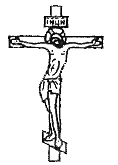
One of the first images of the Crucifier of Crucifying Jesus Christ applies only to the V century, on the doors of the Church of Saint Sabina in Rome. From the V century, the Savior began to be depicted in a long robe of the collussia - as if leaning to a cross. It is such an image of Christ that can be seen on the early bronze and silver crosses of the Byzantine and Syrian origin of the VII-9 centuries.
Holy VI century Anastasius Sinait wrote apologetic ( greek. - "Protection") an essay "against the akefals" - the heretical sect, denying the compound in Christ of two natives. To this essay, he put an image of the Crucifixion of the Savior as an argument against the monophimitis. He spells the correspondencers of his work together with the text to transfer inviolable and attached image to it, as, however, can and see on the manuscript of the Vienna Library.
Another, even more ancient of the preserved, the crucifixion is located on the miniature of the gospel of Raves from the Publone Monastery. This manuscript of 586 belongs to the Florentine Library of St. Lawrence.
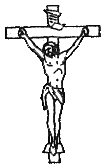
Until the IX century inclusive Christ was depicted on the cross not only alive, resurrected, but also triumphant, and only in the century appeared images of dead Christ (Fig. 54).
From the oldest times of crushes, both in the east and in the West, had a crossbar to stop the feet of the crucifier, and his legs were portrayed by their nail separately. The image of Christ with crossed feet, naught one nail, first appeared, as an innovation, in the West in the second half of the XIII century.
On the cross of the Savior's sovereign, the Greek letters of the UN, meaning - "True," because "God told Moses: I am visiting" (Ex. 3:14), discovering its own name, expressing selfishness, eternity and immutability of the beings of God.
From the Orthodox dogma of the cross (or atonement) undoubtedly implies the idea that the death of the Lord is the redemption of everyone, the vocation of all nations. Only a cross, unlike other executions, gave the opportunity to Jesus Christ to die with open hands calling "All Ends of Earth" (Is. 45:22).
Therefore, in the tradition of Orthodoxy - to depict the Savior of the Almighty as already the resurrected cruster holding and calling in its arms of the entire Universe and carrying Novokavtaya altar - a cross. The prophet Jeremiah from the face of Chrishtonnavitnikov also spoke about this: "We will put the tree in its bread" (11:19), that is, the Tree of the godfather we leave the body of Christ, the bread of the celestially called (Svet. Dimitri growth. Quot. Cit.).
And traditionally the Catholic image of the crucifix, with the hands of Christ, on the contrary, has a task to show how it all happened, to portray the death sufferings and death, and not at all that essentially there is an eternal fruit of the cross - his celebration.
Skimnic cross, or "Calvary"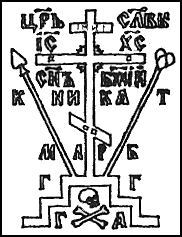
Inscriptions and cryptograms on Russian crosses have always been much more diverse than in Greek.
From the XI century, a symbolic image of Adam's head appears under the lower oblique crossbar of the eight-pointed cross, buried by legend on Calvary ( heb. - "Frontal place"), where Christ was crucified. These words are clarified by the prevailing in Russia XVI century Tradition to produce near the image "Calvary" the following notation: "M.L.R.B." - Lob's place will crucify, "G.G." - Mount Golgotha, "G.A." - Head of Adamov; And the bones of the hands lying before the head are depicted: right on the left, as when burial or communion.
The letters "K" and "T" mean a copy of the warrior and a cane with a sponge depicted along the cross.
Above the middle crossbar is placed inscriptions: "IC" "XS" is the name of Jesus Christ; And under it: "Nika" is a winner; On the title or about it, the inscription: "SN" "BJI" - the Son of God is sometimes - but more often there is no "I.N.S." - Jesus Nazi Tsar Jews; The inspection above the title: "CZP" "PS" is the king of glory.
Such crosses are made to embroider on the pleasures of the Great and Angelic Shima; Three crosses on Paramana and five on the catwalk: on the brow, on the chest, on both shoulders and back.
The Cross of Golgotha \u200b\u200bis also depicted on the funeral Savan, which marks the preservation of vows, data during baptism, like white Savan of the newcomers, meaning the cleansing from sin. With the consecration of temples and houses depicted on the four walls of the building.
Unlike the image of the cross depicting directly crucified Christ, the sign of the cross transmits it spiritual value, I depicts his real meaning, but does not show himself.
"Cross keeper of the whole universe. The cross is the beauty of the Church, the cross of the kings of the Power, the cross is faithful to the statement, the cross the angel of Glory, the cross of the demons of an ulcer, "says the absolute truth of the holiday of the exaltive cross.
The motives of the outrageous desecration and saint of the holy cross conscious crusading and crosses are quite explained. But when we see Christians drawn into this vigilant case, it is impossible to be silent, because - according to the word of St. Vasily the Great - "God aroused silence"!
The so-called "playing cards", available, unfortunately, in many houses, there is an instrument of belligent communication, through which a person certainly comes in contact with the demons - the enemies of God. All four cartoon "suites" mean nothing but the Cross of Christ, together with other Christians with the sacred objects: a spear, sponge and nails, that is, all that was the tools of suffering and death of the Divine Redeemer.
And by ignorance, many people throwing "in a fool", allow themselves to be the gentlemen of the Lord, taking, for example, a map with the image of the Cross "Trilister", that is, the Cross of Christ, who worships Polmir, and, Her Cashlessly with the words (sorry, Lord !) "Trefa" that translated from Yiddish means "bad" or "evil"! Yes, moreover, these crispies, who won in suicide, essentially believe that the cross this "beats" by some belly "trumping six", not at all keeps the "visor" and "kosher" is written, for example, Latin, equally.
It would be time to clarify the true rules for all the cartoon games that "in fools" remain all players: they are that the ritual sacrifices, in Jewish-called "kosher" talmudists (that is, "clean"), allegedly have the power over Life-giving cross!
If you know that playing cards cannot be used for other purposes, except for the christian shroves on the joy of demon, the role of maps and in "fortune telling" are extremely clearly understood - these nasty quests for demonic revelations. Does it be necessary to prove that any of the maps touched to the deck and who did not bring sincere repentance for confessions in sins of blasphemy and blasphemy is guaranteed to recruit in hell?
So, if "Trephists" is a hula of the fissal gamblers on specifically for this, depicted crosses, called them "Krop", what then means - "Vini", "Worms" and "Bubnes"? I will not bother with the transfer and these curses into Russian, since we are not a textbook of Yidisha; I'd rather open the new covenant for shedding the tribe of God's unbearable for them for them.
The saint of Ignatius Bryanchaninov in a mastering challenge is: "Get acquainted with the spirit of time, learning him to avoid the influence of it."
The ladder of "Vini", or otherwise "peaks", hoolitis gospel peak, as the Lord predicted about his run, the mouth of the Prophet Zechariah, that "Review on the one that was pierced" (12:10), and happened: "One of the warriors (Longin) spear pierced him the ribs " (John 19:34).
Cellis of "Chervi" Hulit Evangelsk sponge on canes. As Christ warned about his poisoning, the mouth of Rasporota David, that warriors "I gave me bile in food, and in my thirst I got me vinegar" (Ps. 68:22) and came true: "One of them took a sponge, drove away with vinegar and, imposing a cane, gave him to drink" (Matt. 27:48).
Mattter "Bubne" Hulitis Evangelical forged quad quadrogenic nails, who were nailed by the arms of the Savior to the Tree of the Cross. How did the Lord propheted about his clove puppies, the mouth of the Psalm Pevid, that"Pierced my hands and my feet" (Ps. 22:17), and turned out: Apostle Fomawho said"If I don't see his wounds from nails on the hands of his wounds, and I will not put the fingers of my vandinations from the nails, and I will not put my hands in the rib, I will not believe" (John 20:25), "Beloved because I saw" (John 20:29); and Apostle Peterreferring to the tribesmen, testified:"Israeli men! - he said, - Jesus Nogorhei (…)
you took and, naughty (koki) hands (Romans) flawless, killed; But God raised him. "(Act. 2:22, 24).
Crucified with Christ an unskilled robber, like the current gamblers, hooling the cross suffering of the Son of God and, in the vicinity, in an unrecognizance, forever went to hell; And the robber is prudent, submitting an example, repented on the cross and the items inherited eternal life with God. Therefore, we will remember firmly that for us, Christians, there can be no other subject of hope and hopes, no other support in life, no other unifying and inspiring the banner, except for the only saving sign of the invincible Cross of the Lord!
Cross gammatic
 |
This cross is called "gammmatic" because it consists of the Gamma Gamma letter. Already the first Christians in Roman catacombs depicted a gammatic cross. In Byzantium, this form was often used to decorate the gospels, church utensils, temples, embroidered on the venues of the Byzantine saint. In the 9th century, by order, the Empress Theodora was manufactured by the gospel, decorated with a golden ornament from gammatic crosses.
The gammatic cross is very similar to the ancient Indian swastika sign. Sanskrit word Swastavka or Su-asti-ka means higher being or perfect bliss. This is an ancient solar, that is, associated with the Sun, the symbol that appears in the era upper PaleolithicIt gets widespread in the cultures of Ariii, ancient Iranians, occurs in Egypt and China. Of course, the swastika was known and revered in many regions of the Roman Empire in the era of the spread of Christianity. The ancient Slavic Gentiles was familiar with this symbol; The images of the swastika meets on rings, temporal rings and other jewelry, as a sign of the sun or fire, notes by the Ieria Mikhail Vorobiev. Christian churchwho has a powerful spiritual potential, was able to rethink, incerence many cultural traditions Pagan antiquity: from antique philosophy to household rites. Perhaps the gammatic cross entered christian culture Like a choking swastika.
And the form of this cross has long been used in Russia. It is depicted on many church subjects of the Domongolian period, in the form of a mosaic under the dome of the Cathedral of the Hagia Sophia Kiev, in the ornament of the doors of the Nizhny Novgorod Cathedral. Hammatic crosses are embroidered on the Feloni of the Moscow Temple of Nikola, which in puffs.